Posts Tagged ‘koala extinction’
Tuesday, November 27th, 2012
 Shrinking Koala Habitat – completely dependent upon the whims of Australians, if we give a toss. Shrinking Koala Habitat – completely dependent upon the whims of Australians, if we give a toss.
Being systematically destroyed by O’Farrell Government Loggers across coastal New South Wales, Australia
.
Koala Habitat is being trashed across New South Wales
[Source: The following article was published as ‘When trees fall in the forests’, by Ben Cubby, Sydney Morning Herald, 20101112, ^http://www.smh.com.au/environment/conservation/when-trees-fall-in-the-forests-20101111-17pgt.html]
.
<<The dull, grinding roar of logging trucks has become background noise in the hills around Eden, on the New South Wales south coast. Equally familiar is the sight of people photographing the loggers’ loads as they are hauled down to the local woodchip mill and on to ships bound for Japan. The campaigners are looking for signs of tree trunks that have hollows and may have supported native sugar gliders or owls.
About 1,200 kilometres north, in the subtropical rainforest near Casino, botanists and zoologists are poring over maps and Google Earth, tracking breaches of logging conditions – trees cut down inside protection zones, trees felled that supported endangered wildlife or nourished other flora.
The tit-for-tat battle in the forests has led to frustration on all sides, with forestry workers complaining of ”manic hatred” directed at them. Anti-logging activists say the damage to state forests is systematic and routine, as established rules in the NSW Forest Agreements are disregarded.
”It’s not exactly a surprise to us that there are so many breaches because the fox is in charge of the hen house,” says Lisa Stone, a campaigner with South-East Forest Rescue. ”It keeps happening over and over again. You have got areas where they are supposed to be taking out single trees and then you go there and it’s practically clear-felled.”
For each state forest targeted for logging, a plan must be drawn up that leaves some trees untouched, in accordance with the ”environmental protection licences” issued to logging contractors working for the state government agency, Forests NSW.
.
What the hell is Government’s Forests NSW doing to Wildlife Habitat?
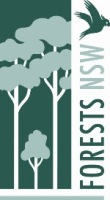
Forests NSW Greenwash:
.
“Forests NSW is committed to ensuring a supply of timber from NSW State forests today and into the future while also protecting other forest values such as biodiversity, clean air and water and public access for recreation. We are committed to running a safe and profitable business for the people of NSW.”
“The NSW (O’Farrell) Government has announced it will make Forests NSW a state owned corporation (SOC). Forests NSW will remain publicly owned and the nature of the business and business relationships will remain largely the same but the governance structures will change to improve the organisation’s commercial performance.
As a state owned corporation under the direction of a skilled commercial board, Forests NSW will be able to focus sharply on its core business of growing and harvesting timber to meet the community’s needs for hardwood and softwood products while still providing recreational opportunities for the people of New South Wales.”
[Source: ^http://www.forests.nsw.gov.au/]
.
Ed: So to the O’Farrell Government the forests are only about human needs – a babyboomer mindset, just like in the Old Testament. “..And God said unto them be fruitful, and multiply, and replenish the earth, and subdue it: and have dominion over the fish of the sea, and over the fowl of the air, and over every living thing that moveth upon the earth.” [Bible, Old Testament, Book of Genesis 1:28] ..and humans have been self-righteously buggering the planet ever since.
.
<<The many-layered oversight system produces a lot of work for the handful of NSW Department of Environment, Climate Change and Water staff, some of whom have found themselves visiting the same logging sites repeatedly.
Forests NSW stressed that a warning letter can refer to separate breaches, which partly explains why the number of warnings issued to Forests NSW is so much lower than the number of times rules get broken.
Nonetheless, department staff have told the Herald that guidelines are often applied indifferently by loggers and some contractors are serial offenders. Forests NSW has also lost staff through voluntary redundancy this year which, some workers argued, affects its ability to police logging contractors.
A spokeswoman for the Environment Department said logging licences contained ”strict provisions to protect the environment, threatened species and its habitat”. Audits of logging operations are carried out every month as part of its compliance program.
”[The department] is concerned about the number of recent alleged breaches being reported in the south-east of NSW and in response is conducting several comprehensive field audits of Forests NSW work in the region. If any of the alleged breaches are found to be substantiated then the [department] will take appropriate action.”
New spice has been added to the deluge of investigations by the recent so-called ”peace deal” in Tasmania, which saw major logging companies, including Gunns, agree to stop logging in old-growth native forests. The deal also included an effective end to large-scale burning of native timber as a source of renewable energy, a process that is now permitted in NSW. The National Association of Forest Industries said it would oppose any effort to transfer the Tasmanian deal to mainland Australia.
A woodchip company, South-East Fibre Exports, is planning to build the state’s first wood-fired electricity plant at Eden, burning ”offcuts”. The company says opposition to its power plant is driven by people with the broader agenda of ending logging in native forests altogether. This seems likely to be true. South-East Fibre Exports blames anti-logging campaigners for setting up a fake website that mocks the company’s proposal, and a campaigner against the power plant, the former fashion designer Prue Acton, found an electronic bugging device in her home earlier this year. No one knows who is responsible for planting the bug, and there is no suggestion it is linked to the logging dispute. Police are investigating.
The NSW Primary Industries Minister, Steve Whan, said he had faith in the forestry companies and Forests NSW. ”Allegations of ‘systematic damage’ are overstated,” says Whan. ”The majority of the alleged breaches in question are minor in nature – with little to no impact on the environment.”
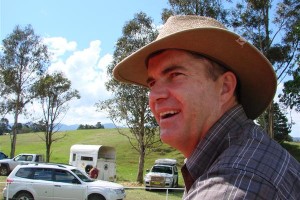 Former NSW Labor Minister for Minerals and Forest Resources, Steve Whan,
who also had Primary Industries, Emergency Services and Rural Affairs – i.e. politically imposed conflicts of interests. Former NSW Labor Minister for Minerals and Forest Resources, Steve Whan,
who also had Primary Industries, Emergency Services and Rural Affairs – i.e. politically imposed conflicts of interests.
.
In southern NSW, the forestry organisation is regularly scrutinised and was operating within the rules.
”Forests NSW southern region has received no penalty notices and not one case has been brought to prosecution for at least the past three years. ‘As a local member in the area as well as the Minister for Forest Resources, I personally welcome the intense environmental scrutiny that forestry operations in the area are subjected to. It is very important that any logging operations in the region comply with all the environmental conditions in place.”
Documents maintained by Forests NSW staff show there were 13 breaches recorded in south-eastern NSW last year.The breaches include cases of ”lack of care taken by operator”, ”operator did not see marking tape” and ”poor rigour in completing surveys”. Some could be explained by mishaps such as a vehicle slipping on a steep hillside into a protected area. In one case a logging contractor cut down trees in an area marked as ”old growth forest” because a global positioning system device had run out of batteries.
Of the 13 recorded incidents, eight resulted in verbal warnings to forestry contractors and one, in which the estimate of damage made by environment department staff differed from Forests NSW’s, resulted in a warning letter. Environmental damage was in every case assessed to be ”nil” and no remedial action was taken.
In part, the mistakes could be put down to forestry workers working to tight deadlines in rugged terrain.
But anti-logging activists are not prepared to be that charitable. The parallels with the situation in northern NSW are remarkable. In the state forests around Casino and Tenterfield, a group called North-East Forest Alliance has identified damage to stands of trees inhabited by koalas, stuttering frogs, sooty owls, powerful owls, golden-tipped bats and yellow-bellied gliders. The same types of breaches are evident, with contractors failing to follow guidelines about properly marking up vulnerable trees. Trees up to two metres wide at the base were cut down inside an area of rainforest described as a ”special protection zone”.
Five sets of allegations, covering dozens of alleged individual breaches in separate forests, were sent to the Environment Department early this year. Staff undertook a joint investigation with the forestry agency, and Forests NSW said a ”compliance response team” had been established.
South-East Forest Rescue recently surveyed state forests at Mogo, near Batemans Bay, and found recent logging in areas that were supposed to have been preserved, including an Aboriginal cultural site and conservation areas. In a report sent to the government, it alleges that many hectares of forest that should have been off-limits to loggers had been cleared.
The group has also walked through south coast state forests Tantawangalo, Yambulla, Glenbog and Dampier, collecting photographs of logging sites. Earlier surveys of the various regions by the Environment Department show habitat supporting sooty owls, yellow-bellied gliders, square-tailed kites, giant burrowing frogs, bent wing bats, tiger quolls, glossy black cockatoos and powerful owls may have been damaged.
The group’s surveys have been passed on to the Environment Department. The department said its own studies in the area are expected to run until mid-November. Stone says the group wanted Whan to visit the logging locations they had surveyed.>>
.
.
Koala habitat faces bulldozing in Victoria
[Source: ‘Super-koala’ habitat faces bulldozing, by Claire Miller, 20051002, ^ http://www.theage.com.au/news/national/superkoala-habitat-faces-bulldozing/2005/10/01/1127804696947.html]
 Susie Zent in the area slated for road-widening 2005 Susie Zent in the area slated for road-widening 2005
(Photo: Cathryn Tremain)
.
South Gippsland (2005):
.
<<Critical habitat supporting the so-called Strzelecki “super-koala” and endangered powerful owls is to be bulldozed as part of a controversial road-widening project in South Gippsland.
Several hundred trees, many home to koalas and with hollows suitable for nesting owls and other wildlife, will be lost, despite consultants warning the Latrobe City Council that the damp forest habitat is virtually irreplaceable in a region largely cleared of native vegetation.
The local member for Morwell, Brendan Jenkins, is appealing to Environment Minister John Thwaites for an 11th-hour reprieve after local conservationists lost their case in the Victorian Civil and Administrative Tribunal.
Latrobe Council wants to widen Budgeree Road so that logging trucks servicing plantations can pass each other. Trucks now travel one way down the road and return via another route. Budgeree Road is also a tourist drive to Tarra Bulga National Park.
The tribunal initially raised strong objections to the project, near Boolarra, in the face of evidence that the council took little account of the vegetation affected, that traffic volumes did not justify the scale of the works, and that a redesign could save most trees. Then, in a surprise turnaround, it approved the project last month with minor amendments.
.
‘Strzelecki koalas are a genetically superior group that may hold the key to the species’ long-term survival in Victoria.
All other koalas in the state are descended from a handful of individuals transferred to French Island more than a century ago, a few years before koalas were hunted to near-extinction on the mainland.’
.
Ed: This is a ecological cry of impending Koala regional extinction and a representative indictment of Australia’s deliberate and evil extermination of its wildlife.
.
The French Island colony was used to repopulate the state, but inbreeding is now becoming apparent. The Strzelecki koalas, however, appear to be a remnant of the original and genetically diverse mainland population.
The roadside forest is rare in its own right, being of “very high conservation significance”. This category has legislative protection under the Native Vegetation Management framework, and can be cleared only under exceptional circumstances.
The loss of hollow-bearing trees is also listed as a threat under the Flora and Fauna Guarantee Act. Consultants from Biosis Research told Latrobe Council it would be difficult to find other damp forest areas that could offset the loss of roadside remnants.
Susie Zent, from Friends of the Gippsland Bush, said VCAT had set conditions for the roadworks based on a mistaken classification by the Department of Sustainability and Environment as to the vegetation’s significance. She said the VCAT decision could be set aside if the department admitted to an error of judgement and requested amendments to its permit conditions.
Latrobe’s chief executive officer, Paul Buckley, said he expected VicRoads to sign off the final plans within three or four weeks. He said the additional width was needed to improve safety.
A spokesman for Mr Thwaites said the department was waiting for final details from the council, particularly in relation to offset measures. “Offset measures are required to ensure there is no overall loss of areas that have ecological significance,” he said.>>
.
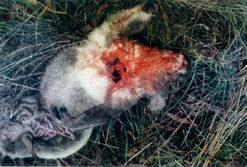 Strzelecki Koala Endangered
(South Gippsland Victorian, Australia) Strzelecki Koala Endangered
(South Gippsland Victorian, Australia)
.
<<Of major concern due to the logging and clearing activities of both Hancock Timber Resource Group and PaperlinX is the long term survival of populations of the Strzelecki and South Gippsland Koalas whose entire habitat is now owned by these companies.
An investigation carried out by Dr Bronwyn Houlden, School of Biological Science, University of New South Wales, 20th March 1997 and 6th April 1998 confirmed that the genetic pool of these koalas has not been compromised. Dr Houlden indicates that on a national basis koalas generally are not considered to be threatened. She advises that this assessment has unfortunately led to an extremely simplistic view of conservation of biodiversity in the species.
Through extensive analysis by herself and her collaborators she has revealed that the species is composed of highly differentiated populations with low levels of gene flow between populations throughout their range. The Strzelecki Koala population constitutes a separate management unit and is significant in terms of management of biodiversity on a regional and state basis. Dr Houlden found that the Strzelecki Ranges had the highest level of genetic variation, of any Victorian population she has analysed. This is important, given the low levels of genetic variability found in many populations in Victoria, which have been involved in the translocation program.>>
.
[Source: ‘Strzelecki Koala Endangered’, Hancock Watch (conservation group), ^http://hancockwatch.nfshost.com/docs/koala.htm#content_top]
.
.
The Critical Habitat Truth behind Hancock Timber Resource Group
.

Foreign-owned and controlled Hancock Timber Resource Group, claims publicly that its Victorian timber plantation operation, Hancock Victorian Plantations (HVP) is committed to…
“environmental responsibility is underpinned by the company’s environmental policy and management system, forest stewardship program, best management practices, which include internal and external performance measures, and active community consultation program, working with groups such as Landcare, field naturalists and Waterwatch.”
.
Hancock Victorian Plantations claims…
“HVP sets its own high standards, its operations are monitored by local shires, water catchment management authorities, the Environment Protection Authority (EPA) and the Victorian Department of Environment and Sustainability. The company is also subject to regular audits to maintain its Australian Forestry Standards (AFS) and Forest Stewardship Council (FSC) certifications.”Around 70 per cent of HVP’s total landholdings are sustainably-managed plantations, growing largely on land that was previously cleared for farming. The company maintains the remaining 30 per cent of its holdings for plantation protection, conservation and other community values.In the Strzelecki Ranges, HVP has set aside almost half of its land from timber production, managing this native forest for conservation.”
[Source: ^http://www.hvp.com.au/environment-conservation]
.
Editor: It all sounds wonderful coming from this United States industrial logger. But since when has anyone trusted US corporations? Read the snapshot log below.
.
 Road hit female koala with broken jaw. Had to be euthanised after 6 weeks.
Urgent research is required to determine breeding populations, location and numbers. Logging seriously impacts on long term populations of this animal.
[Source: Hancock Watch, ^http://hancockwatch.nfshost.com/docs/koala.htm#content_top] Road hit female koala with broken jaw. Had to be euthanised after 6 weeks.
Urgent research is required to determine breeding populations, location and numbers. Logging seriously impacts on long term populations of this animal.
[Source: Hancock Watch, ^http://hancockwatch.nfshost.com/docs/koala.htm#content_top]
.
.
Snapshot of a month’s logging of Koala Habitat:
[Source: ^http://hancockwatch.nfshost.com/docs/04sep.htm ]
.
South Gippsland, Victoria (October 2002) – systematically being destroyed for corporate profit by United States multi-national ‘Hancock Timber Resourse Group’:
.
Jeerlang West Road Strzelecki Ranges
- Locals outraged by removal of native vegetation – Koala Feed Trees. Koala corridor destroyed. Koalas are now not sited in this area. 8 Koalas have died in this area in the last 12 months.
.
Strzelecki Ranges (Jeeralangs)
- Eucalypts globulus – Bluegum (4ssp.) Southern Blue Gum – subspecies globulus. Restricted on the mainland to South Gippsland and Otways. Road works resulted in logging of older trees. Prime koala habitat destroyed by Grand Ridge Plantations/Hancock. A recent change in management will hopefully result in the end of this type of practice.
.
Strzelecki Ranges (Jeeralangs)
- Prime koala habitat destroyed without permit application by Grand Ridge Plantations/Hancock. Destruction of the rare Globulus globulus.
.
93-41 Creswick plantations
- Creek crossing over Anderson’s Gully which feeds into Creswick Creek. Tullaroop Water Catchment. Drinking water for Maryborough, Carisbrook, Talbot, Adelaide Lead, Alma, Havelock, Majorca and Betley. Sediment enters waterways mainly via creek crossings and roads.
.
93-41 Petticoat Plantation
- Tributary of Anderson’s Gully in the headwaters of the Murray Darling Catchment (Loddon River). Logging machinery driven straight through creekline.
.
93-41 Petticoat Creek
- Closeup of machinery entering tributary of Anderson’s Gully in the Tullaroop Water Catchment. Note build up of sediment which will wash into gully after rain. Note also buildup of stagnant water.
.
93-41. Petticoat Plantation
- Tullaroop Proclaimed Water Catchment. Machinery access into Anderson’s Gully tributary.
.
Morwell River East Branch/Strzelecki Ranges
- Creek crossing with sediment washing into waterway. Note also Slender Tree Fern an FFG listed species. Australia’s first FSC Assessment team in the Strzelecki Ranges. Discussing roading/landslide issues in the Jeerlangs.
.
Traralgon Creek in the Latrobe River catchment (Strzelecki Ranges)
- Recent pine logging with limited bufferzone in a pine plantation by Grand Ridge Plantations/Hancock. As part of the Friends of the Gippsland Bush/Australian Paper Agreement of 1997, 50 m buffers of native vegetation will be established along Traralgon Creek after pine logging. There were also problems with a creek crossing at this location, which can be seen eroding into the creek in this photo.
.
Tributary of Jeeralang Creek with cool temperate rainforest (Strzelecki Ranges)
- A Myrtle Beech tree is in the centre of the gully. The person in the photo is holding a twig with Myrtle Beech leaves taken from the base of a tree in the gully. According to the 1997 8 Point Agreement 50m buffers along Jeeralang Creek will be replanted with indigenous species. This area should not have been logged at all. Cool Temperate Rainforest needs much greater buffer for its long term protection and survival.
.
Jeeralang West Road
- (Non-plantation) Blackwood and Austral Mulberry cut down along roadside easement which is Crown Land. Logged by Grand Ridge Plantations/Hancock.
.
Billy’s Creek Catchment/Strzelecki Ranges
- Twenty metre buffer should be reinstated at this site as in accordance with Billy’s Creek Water Supply Catchment, Plan no 1870. (Ideally the entire slope should be retired from timber production due to its steepness).
.
Billy’s Creek catchment/Strzelecki Ranges
- 20m buffers should be reinstated in this plantation area.
.
Jumbuk Road/ Strzelecki Ranges
- Logging of roadside buffers/easements. Wildlife corridors destroyed at this site as well as the head of a gully feeding into Billy’s Creek.
.
93-29 Scarsdale Plantation (Woady Yaloak catchment)
- What is the long term impact on water yield from pine plantations in this catchment?
.
93-41 Petticoat plantation (Headwaters of the Murray Darling catchment [Loddon River])
- Tullaroop Water catchment is currently at 30% of its capacity due to primarily to drought. Hancock logged 223ha of pine in this catchment in 2001/2. Much of the land within the Creswick State Forest has in the past been affected by gold mining activities. Stabilisation of the worst affected areas was achieved with softwood plantations. Will sediment from these mining sites be disturbed by current plantation logging. Tullaroop catchment supplies towns such as Maryborough with drinking water. What is the impact of logging on water quality and quantity in this catchment?
.
Korweinguboora Reservoir catchment.
- Recently logged by Hancock. Note lack of buffer zones for this wetland feeding into the Reservoir. This reservoir supplies Geelong and other towns with drinking water.
.
Korweinguboora catchment (Geelong’s water supply)
- How can Hancock guarantee that herbicides and fertilser residues will not enter Geelongs water supply? Note lack of buffers surrounding this drainage line.
.
A tributary of Creswick Creek in the Tullaroop Water supply catchment
- Note lack of creek buffer zones and ripping of soil into creek banks. Will herbicide residues enter water from this site? What impact will operations at this site have on quality of water for all species including people? Is this sustainable?
.
Tributary of Creswick Creek in Tullaroop water supply catchment
- Over 200 ha of pine plantations in this catchment were logged in 2001/2. What is the long term effect of fast rotation plantations on water quality and quantity? Pines cut out of creek itself and creek banks at this site.>>
.
.
Bligh Labor Government flogs off Queensland’s forests for $603M to Hancock
.
[Source: ‘State sells off Forestry Plantations Queensland for $603 million to Hancock Queensland Plantations’, AAP, 20100518, ^ http://www.couriermail.com.au/business/state-sells-off-forestry-plantations-queensland-for-603-million-to-hancock-queensland-plantations/story-e6freqmx-1225868108050]
.
.
<<The Queensland Labor government has announced the sale of Forestry Plantations Queensland – the first transaction in its controversial asset sales. Treasurer Andrew Fraser said the 99-year licence for the timber plantation business would be sold for $603 million to Hancock Queensland Plantations. The sale price is well in excess of the $500 million that had been anticipated. Mr Fraser said he signed the contract on Tuesday morning.
“By reaching agreement on a price of $603 million, this exceeds original expectations and is great news for Queensland taxpayers,’‘ Mr Fraser told state parliament on Tuesday. “This is the first of the five commercial businesses to be sold, licensed or leased to the private sector, as the government reforms the state balance sheet and builds a stronger Queensland economy.”
He said award staff would have their jobs guaranteed for three years. Mr Fraser said Hancock Queensland Plantations, a company managed by Hancock Timber Resource Group on behalf of institutional investors, had won the right to grow and harvest the trees.
Crown plantation land on which the majority of the business sits will remain in government ownership. The sale includes about 35,000 hectares of freehold land, which is about 10 per cent of the total estate.
Hancock Timber Resource Group manages more than two million hectares of timberlands worth approximately $US8.5 billion ($A9.7 billion) across the United States, Brazil, Canada, New Zealand and Australia.>>
.
.
NSW Government accused of logging Koala Habitat
[Source: ‘NSW govt accused on koala habitat logging’, 20111118, ^http://news.ninemsn.com.au/national/8375719/nsw-govt-accused-on-koala-habitat-logging]
.
<<The opposition has accused NSW Environment Minister Robyn Parker of allowing the logging of koala habitats on the state’s mid-north coast. Opposition environment spokesman Luke Foley said the minister had received a “scathing” letter from the local councils protesting her decision to allow logging of core koala habitats in the area.
“These councils are traditionally pro-development – but even they are alarmed that Robyn Parker is allowing a national icon to be endangered thanks to her ‘unsound ecological approach’,” Mr Foley said in a statement on Thursday.>>
He said that…
On October 27 Ms Parker said “logging protects koalas”
.
Editor: Robyn Parker has not got a clue about her Environment portfolio. She is another teacher-turned-politician and clearly insecure. Last month Parker sacked the head of her department, Lisa Corbyn, and has been through five press secretaries.
The opposition’s environment spokesman Luke Foley: “When will Premier O’Farrell do the decent thing and get a new environment minister?”
[Source: ‘Controversial Environment Minister Robyn Parker creates a climate of change’, by Andrew Clennell, State Political Editor, The Daily Telegraph, 20120121, ^http://www.dailytelegraph.com.au/news/minister-creates-a-climate-of-change/story-e6freuy9-1226249892102]
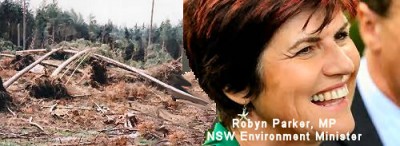 Embattled: Ms Parker – thinks she’s only accountable to herself and Premier O’Farrell.
Picture: Kristi Miller Source: The Daily Telegraph Embattled: Ms Parker – thinks she’s only accountable to herself and Premier O’Farrell.
Picture: Kristi Miller Source: The Daily Telegraph
.
.
New South Wales allowed logging in Koala Habitat
.
[Source: ‘NSW allowed logging on koala habitat’, by Rosslyn Beeby, Science and Environment Reporter, Canberra Times, 20110210, ^http://www.canberratimes.com.au/news/national/national/general/nsw-allowed-logging-on-koala-habitat/2072043.aspx]
.
<<The NSW Government has allowed 2,000 heactares of koala habitat to be logged at Coffs Harbour in northern NSW, despite a local koala conservation plan endorsed by the local council, a Senate inquiry has heard.
One of Australia’s leading koala researchers, Alistair Melzer, has accused federal environment bureaucrats of doing little to avoid ”an escalating conservation crisis” as koala populations decline.
Dr Melzer, who heads Central Queensland University’s koala research centre, told the Senate environment committee inquiry it appeared that Canberra’s bureaucrats ”do not seem to be sensitive to the real state of the environment”.
The six-month inquiry, into the conservation status and sustainability of Australia’s koalas, is investigating threats to the future survival of the species.
In his submission, former Coffs Harbour City Council deputy mayor Rod McKelvey said the NSW Department of Environment’s private native forestry division granted logging permits which resulted in the loss of 2000ha of ”core koala habitat” protected by the council’s koala conservation plan. Mr McKelvey said the department subsequently argued the plan ”did not fall under” NSW environmental planning policy.
”I do not want to be included in the generation who stood by and did nothing while we systematically destroyed koala habitat, making it almost impossible for them to live here,” he said.
Gunnedah farmer Susan Lyle, who has koalas on her three properties, raised concerns about a mining exploration licence issued for open-cut coal mining in the region.
”Our koalas will be decimated. This mining licence is primarily in isolation and to allow such a development is sheer lunacy … There are many, many other resources that can be used for energy, but there is no replacement for the koala,” she said.
.
.
Federal Forest Enquiry a Sham
.
[Source: ‘Federal Forest Inquiry a Sham’, 20111130, North East Forest Alliance, ^http://nefa.org.au/]
.
<<Conservation Group, North East Forest Alliance (NEFA), is outraged at the bias of the Federal House of Representatives report ‘Inquiry into the future of the Australian Forestry Industry’ and its refusal to consider the timber supply crisis and the over-logging of north-east NSW’s public forests.
NEFA spokesperson, Dailan Pugh, said that most of the evidence presented in NEFA’s 111 page submission was ignored by the inquiry on the grounds that it “criticised the industry”. “What they didn’t ignore they misrepresented. This pretend inquiry was a sham” he said.
“The Commonwealth is party to the North East Regional Forest Agreement (RFA) and claims that it satisfies its national and international obligations for the protection of world heritage, national estate and threatened species.
“While national heritage values were meant to be addressed as part of the RFA, they were not, so the Commonwealth gave the NSW Government an extra two years to complete the process. A decade later and there has still been no assessment and the Federal Government does not care.
“Similarly the RFA was meant to provide protection for nationally threatened species. The evidence we presented, such as the illegal trashing of a population of the nationally endangered fern Lindsaea incisa at Doubleduke, that was meant to be protected by a 50m buffer, was ignored because we were being ‘critical’.
“What is most astounding is that the inquiry refused to consider the evidence we presented on the current timber supply crisis due to the over-commitment of wood from north-east NSW’s public forests.
“Ever since new Wood Supply Agreements for timber from public land were given to sawmillers in 2004 Forests NSW have not been able to supply the committed volumes,” Mr Pugh said.
“The NSW Government’s recklessness in issuing these new Wood Supply Agreements has already cost taxpayers millions of dollars to buy back committed volumes and to compensate BORAL for Forests NSW’s failure to supply. As the crisis worsens, taxpayers exposure to multi-million dollar compensation claims grows.
“In vain efforts to meet shortfalls and reduce their payouts Forests NSW have been over-logging plantations, cutting trees before they mature, increasing logging intensities, logging stream buffers, and logging trees and areas required to be retained for threatened species. They are cutting out the future of the industry and causing immense environmental harm in the process.
“It is appalling, that an inquiry dealing with forestry has completely ignored this crisis and recommended that the Commonwealth Government condone and support this grossly unsustainable and irresponsible logging.
“Local Page MP, Janelle Saffin features in the inquiry’s report despite her electorate being one of the worst affected by the timber supply crisis, rampant illegal logging and widespread forest dieback.
“We call upon Janelle to please explain why the Commonwealth continues to ignore the gross over-logging, fails to identify and protect national heritage values, refuses to take action on the illegal logging of the habitat of nationally threatened species and refuses to consider the dieback of tens of thousands of hectares of public forests in her electorate. She needs to tell her constituents what she is going to do about it”” Mr. Pugh said.>>
.
.
South East Forest Rescue cranking it in south-east NSW
.
[Source: ‘South East Forest Rescue cranking it in south-east NSW’, 20120118, ^http://www.thelaststand.org.au/tag/southeast-forest-rescue/]
.
<<South East Forest Rescue have taken some crackerjack action this morning, halting forestry operations with a giant tripod and tree sit structure to highlight illegal logging in the Yambulla State Forest, south of Eden. The logging compartment where breaches have been identified by SEFR contains records of nationally listed endangered species such as glossy black cockatoos, smokey mice, southern brown bandicoots, tiger quolls, eastern pygmy possums, bent wing bats, yellow-bellied gliders, gang gang cockatoos and white-footed dunnarts.
“The response from Forests NSW shows the complete lack of regard for the licence conditions that Forests NSW and their contractors must abide by. The licence conditions for threatened species and habitat conservation are not being adhered to, even though the conditions are grossly inadequate” said forest campaigner Lisa Stone.
“We have reported the breaches in this compartment to the Office of Environment and Heritage,” said Ms Stone. “We stated last time that the probability of further breaches in this compartment if harvesting continues is high given that this logging contractor is a repeat offender and that FNSW still is not complying with the licence conditions” said Ms Stone.>>
.
.
‘NSW failing to protect koalas: Labor’
.
[Source: ‘NSW failing to protect koalas: Labor’, 20111027, AAP republished in the Sydney Morning Herald, ^http://www.smh.com.au/environment/conservation/nsw-failing-to-protect-koalas-labor-20111027-1mlnt.html]
.
<<The NSW Liberal government is failing to protect koalas by allowing logging in remaining habitats, the opposition says. Environment spokesman Luke Foley accused Environment Minister Robyn Parker of breaking an election promise to protect koalas after logging went ahead at the Bermagui State Forest on the south coast.
Logging also started last week at Boambee State Forest on the mid north coast, one of the last habitats for the vulnerable species in the area, Mr Foley said.
“For you to fail to respond and fail to intervene is a gross breach of your election policy to protect our national icon,” Mr Foley said at a budget estimates hearing in Sydney today. “Surely the precautionary approach would be for you as Environment Minister to stop the logging of this key koala habitat?”
Ms Parker denied breaking any election commitments, and said the government was working hard to protect koalas.
“When it comes to forestry, we are about getting a balance and protecting our native species. We are working very hard on them,” she said. “We have written to Forests NSW recommending a precautionary approach to managing impacts on koalas in the Boambee State Forest…The agreement that allowed logging to take place had been signed by the previous government, Ms Parker said. “Perhaps you should go back and look at what was going on when your government signed up to that agreement.”>>
.
.
Koala habitat cleared to make way for more houses
.
[Source: ‘Koala habitat cleared to make way for more houses’, 20121127 (today), by Nicole Fuge, Sunshine Coast Daily, ^http://www.sunshinecoastdaily.com.au/news/koalas-lose-vital-coast-habitat/1637085/]
.
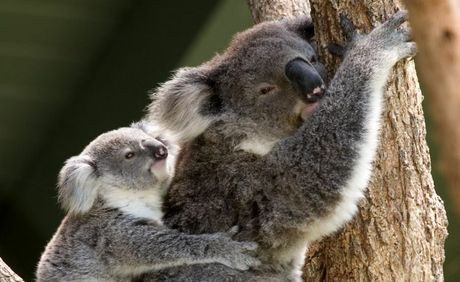
<<More than 100 hectares of koala habitat has been cleared to make way for more houses, another nail in the coffin for one of Australia’s icons.
Work has begun clearing the land behind Aussie World and the Ettamogah Pub for a 334-lot rural residential development.
Despite more than 30% of the 145-hectare site secured for environmental reserve and 12 hectares of revegetation to offset present clearing, Sunshine Coast Koala Wildlife Rescue volunteer Ray Chambers fears it’s not enough.
Mr Chambers said the area’s koala population was already fragile and the removal of so many trees would have a disastrous affect.
“We do have the odd koala in part of the Palmview area, it’s not a great deal but we know they are there,” he said. “From Forest Glen to the Caloundra turn-off is a koala corridor.”
.
Mr Chambers said there were only about 100 koalas left on the Coast, representing 18% of the Queensland population.
.
A council spokeswoman said despite approval of the development pre-dating an introduction of state-wide regulatory provisions for koala conservation, the council and Department of Environment and Heritage Protection officers had enforced koala protection measures and vegetation offsets.
Developer guidelines include:
- More than 30% of the original site secured in environmental reserve.
- Traffic calming, speed bumps, and fauna under and overpasses installed to minimise car strikes.
- Building envelopes to be enclosed with dog-proof fencing, leaving the balance of each lot free for fauna movement.
- About 12ha of revegetation, including planting koala food trees, to be carried out to offset the clearing.
The spokeswoman said a fauna spotting catcher had also been present during clearing.>>
..
Ed: What chance do Koalas have?
.
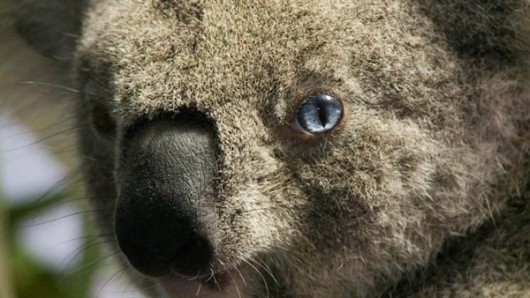 [Source: National Geographic, ^http://natgeotv.com.au/tv/koala-hospital/gallery.aspx] [Source: National Geographic, ^http://natgeotv.com.au/tv/koala-hospital/gallery.aspx]
.
Tags: Australia, Forests NSW, Government Loggers, Koala, koala extinction, koala habitat, New South Wales, NSW Forest Agreements, South East Forest Rescue
Posted in Gippsland (AU), Koalas, South East Corner (AU), Threats from Deforestation | 2 Comments »
Add this post to Del.icio.us - Digg
Friday, November 2nd, 2012
 Once were common – now pose for the commoner! Once were common – now pose for the commoner!
Australia’s Koala
(Phascolarctos cinereus)
.
Australia’s iconic and once prolific Koala is now nationally listed as vulnerable to extinction.
What a despicable indictment of Australians!
<<The Koala was formerly common throughout the broad band of forests and woodlands dominated by Eucalyptus spp. extending from north Queensland to the south-eastern corner of mainland South Australia, Australia (Maxwell et al. 1996). However, the overall distribution of Koalas has been reduced since European settlement. This decline was primarily due to disease, bushfires, and widespread habitat destruction in the early decades of the 20th century.
Commercial poaching of koalas (they called it ‘harvesting‘) took place across the range towards the end of the 19th century and early 20th century (huge numbers, running into the millions, were killed for their pelts for a large export industry in Victoria, New South Wales, and Queensland). Koalas were widely hunted during the 1920s and 1930s, and their populations plunged.>>
Backward Queensland was the worst offender. In August 1927, the Koala fur trade saw the Queensland Government declare ‘open season’ on Koalas. Some 600, 000 koalas were shot to make gloves and hats in jut one month. It became known as ‘Black August‘.
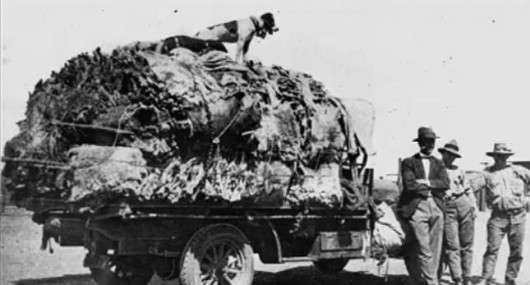 1927 ‘Black August’
When 600,000 Koalas were shot and skinned across Queensland
1927 ‘Black August’
When 600,000 Koalas were shot and skinned across Queensland
.
Commercial hunting was banned in Victoria in the 1890s, yet it continued sporadically (and under regulation) in backward Queensland until 1927 (Hrdina and Gordon 2004).

<<The Koala currently ranges from northeastern, central, and southeastern Queensland with patchy populations in western areas, to eastern New South Wales including the coastal strip and highlands of the Great Dividing Range, the western plains and related riparian environments where suitable habitat occurs, Victoria, and southeastern South Australia. The geographic range has contracted significantly due to loss of large areas of habitat since European settlement. In Queensland, extent of occurrence and area of occupancy have contracted by about 30% (Gordon et al. 2006).
Helped by reintroduction, Koalas have reappeared over much of their former range, but their populations are smaller and scattered. Koalas need a lot of space—about a hundred trees per animal—a pressing problem as Australia’s woodlands continue to shrink.>>
[Sources: The IUCN Red List of Threatened Species – Phascolarctos cinereus (Koala), ^http://www.iucnredlist.org/details/16892/0 ; ‘Koala’, National Geographic, ^http://animals.nationalgeographic.com/animals/mammals/koala/]
.
(2.6MB, pdf – NB. if slow to open, GoTo: File > Save As.., then open the PDF file from your auto-download folder)
.
[Source: The Decline in the distribution of the Koala in Queensland, G. Gordon, F. Hrdina, R. Patterson, Zoologist Vol 33, 2004,^http://www.rzsnsw.org.au/]
.
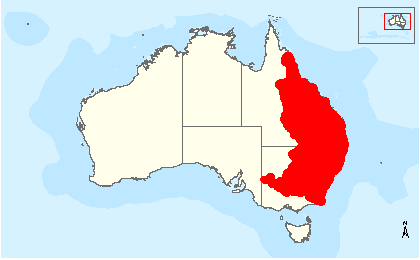 Koala Traditional Natural Range map (excluding Victorian and South Australia) Koala Traditional Natural Range map (excluding Victorian and South Australia)
[Source: ‘Koala (combined populations of Queensland, New South Wales and the Australian Capital Territory), Australian Government,
^http://www.environment.gov.au/cgi-bin/sprat/public/publicspecies.pl?taxon_id=85104]
.
<<Since European settlement, approximately 80% of Australia’s eucalypt forests have been decimated. Of the remaining 20% almost none is protected and most occurs on privately-owned land.>>
[Australian Koala Foundation, ^https://www.savethekoala.com/our-work/land-clearing-koalas]
.
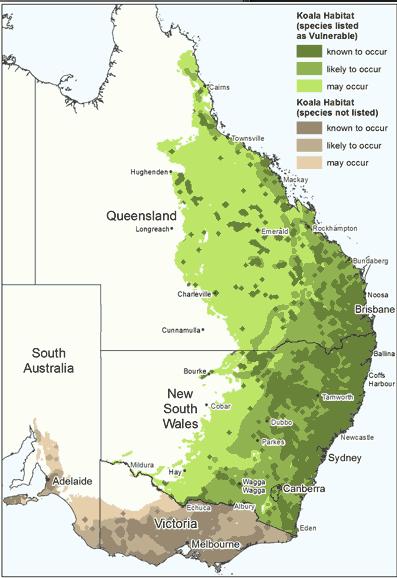 Koala reduced range map Koala reduced range map
Ed: Interpretation is Dark Green = known to occur, Light and Mid Green = used to occur
Dark green is where human population growth is worst!
(Source: ‘Koala (Phascolarctos cinereus) Listing’, Australian Government, 2012),
^http://www.environment.gov.au/biodiversity/threatened/species/koala.html]
.
.
Koalas partially listed as ‘Vulnerable’ to extinction
.
In April 2012, Australia’s Environment Minister, Tony Burke, declared that ‘at-risk’ koala populations along Australia’s eastern seaboard ‘vulnerable‘ under Australian national environment law – specifically under the Environment Protection and Biodiversity Conservation Act 1999.
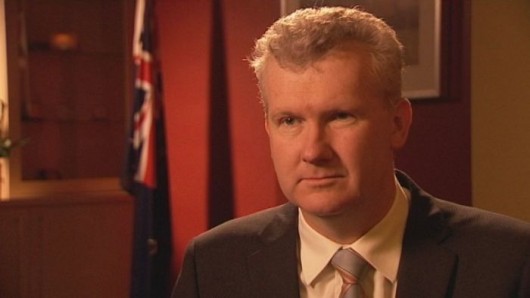 Australia’s Environment Minister, Tony Burke
Being interviewed on ABC Four Corners 20120821
[Source: ‘Koala Crunch Time’, ABC Four Corners, 20120821,^http://www.abc.net.au/4corners/stories/2012/08/16/3569231.htm] Australia’s Environment Minister, Tony Burke
Being interviewed on ABC Four Corners 20120821
[Source: ‘Koala Crunch Time’, ABC Four Corners, 20120821,^http://www.abc.net.au/4corners/stories/2012/08/16/3569231.htm]
.
This ‘EPBC Act‘ remains the Australian Government’s central piece of environmental legislation, providing a legal framework to protect and manage nationally and internationally important flora, fauna, ecological communities and heritage places. The Australian Government’s Department of Environment (etc) is currently developing EPBC Act referral guidelines for the Koala.
[Source: Australian Government, ^http://www.environment.gov.au/epbc/publications/interim-koala-referral-advice.html]
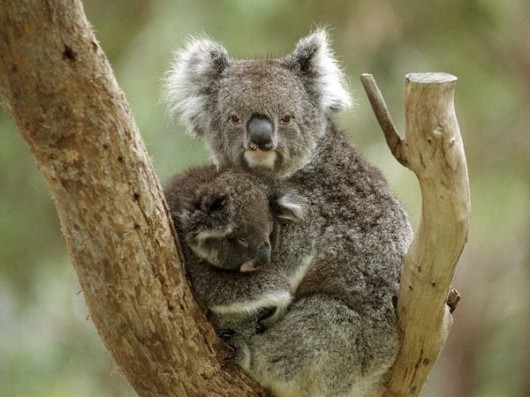 Koala with joey – zoo captive to benefit tourist visitation Koala with joey – zoo captive to benefit tourist visitation
[Source: Photo by Medford Taylor, National Geographic,
^http://animals.nationalgeographic.com/animals/mammals/koala/]
.
<<Rigorous scientific assessment by a variety of experts over the past three years has been reported back to Australia’s lead body on biodiversity conservation, the Threatened Species Scientific Committee (TSSC), which has found that Koala populations particularly in Queensland, New South Wales and Australian Capital Territory have declined markedly in recent years to a point where in these areas populations are vulnerable to regional extinction.
In 2011, the Threatened Species Scientific Committee combined available data for Koala populations across their natural range and generated estimates of the decline experienced over the period 1990–2010 by the national Koala population and, separately, the combined Queensland, NSW and ACT population (TSSC 2011bi).
The parameters of greatest uncertainty are the size of the Queensland population in 1990 and rate of subsequent decline, particularly in inland bioregions, and the size of the Victorian population.>>
The following table is a summary of the TSSC assessment of national Koala populations (TSSC 2012p):
| Region |
Date |
Best estimate |
Decline |
| Queensland |
1990 |
295 000 |
|
| 2010 |
167 000 |
43% |
| New South Wales |
1990 |
31 400 |
|
| 2010 |
21 000 |
33% |
| Victoria |
1990 |
215 000 |
|
| 2010 |
200 000 |
7% |
| South Australia |
1990 |
32 000 |
|
| 2010 |
19 500 |
39% |
TSSC 2012 Assessment of National Koala Populations
[Source: Koala (combined populations of Queensland, New South Wales and the Australian Capital Territory), Species Profile and Threats Database, Australia Government, ^http://www.environment.gov.au/cgi-bin/sprat/public/publicspecies.pl?taxon_id=85104]
.
<<These are the same regions where rapid ongoing housing development is allowed and encouraged, as Australia’s human population expands uncontrollably.
Mr Burke said “Koala populations are under serious threat from habitat loss and urban expansion, as well as vehicle strikes, dog attacks, and disease…In fact, in some areas in Victoria and South Australia, koalas are eating themselves out of suitable foraging habitat and their numbers need to be managed.”
“That is why the Scientific Committee recommended to me to list the Queensland, New South Wales and Australian Capital Territory populations as threatened, rather than to list the koala as nationally threatened across its full range.”
Mr Burke said the Gillard Government had committed $300,000 of new funding under the National Environmental Research Program Emerging Priorities to find out more about koala habitat.
“This funding will be used to develop new survey methods that will improve our knowledge of the quality of koala habitat using remote sensing, and help fill important data gaps to enhance our understanding and ability to protect the species,” Mr Burke said.
“The new funding is in addition to more than $3 million we have invested since 2007 to ensure the resilience and sustainability of our koala population.”>>
[Source: ‘Koala protected under national environment law’, The Hon Tony Burke MP media release, Minister for Environment etc, 20120430, ^http://www.environment.gov.au/minister/burke/2012/mr20120430.html]
.
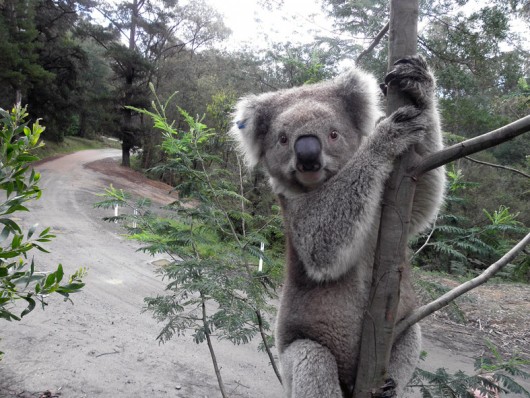 Koalas reduced to patchy populations
Below the IUCN radar/crisis, Koala functional extinction looms
… patchy populations, and more patchy every year.
Do we wait until Koala numbers downgrade to ‘Critically Endangered‘ before the Australian Government gives a toss! Koalas reduced to patchy populations
Below the IUCN radar/crisis, Koala functional extinction looms
… patchy populations, and more patchy every year.
Do we wait until Koala numbers downgrade to ‘Critically Endangered‘ before the Australian Government gives a toss!
[Source: ^http://home.vicnet.net.au/~fofkk/]
.
.
Australian Government – too little, too late, too selective
.
<<But the Australian Government’s announcement (back in April 2012, now six months ago) only confirmed what the Lismore-based ‘Friends of the Koala‘ group has known for more than a decade. Friends of the Koala volunteer carer Lola Whitney said the listing was long overdue.
“The work that we do here tells us that koalas are in danger of becoming extinct,” she said. “So many koalas come through our care centre every year, that it’s amazing we’ve got any around here at all. And the amount we lose from being hurt or from diseases – we lose a lot.”>>
.
Ed: But the Australian Government has only partially listed Koalas as vulnerable to extinction in Queensland, New South Wales and the Australian Capital Territory (ACT). Whereas Victorian and South Australian koalas were omitted.
.
This was because these were the recommendations of the 2011 Senate Enquiry, despite the TSSC confirmed 39% decline in the South Australian Koala population between 1990 and 2010.
.
Tony Burke as ultimate custodian: Why were problematic declining Koalas across South Australia and Victoria excluded from the EPBC Act?
.
It was also because the lead authority, the Threatened Species Scientific Committee, had “information gaps”, and because “the body of data on the status of koala populations is patchy, often sparse and not nationally comprehensive or coordinated”, the TSSC ignored the ‘Precautionary Principle and repeatedly rejected the Koala’s threatened species listing on the EPBC Act.
.
What it failed to appreciate was the more appropriate IUCN Red List categories of ‘DATA DEFICIENT’ (DD) and ‘NOT EVALUATED’ (NE).
.
.
The Conclusion by the 2011 Senate Committee Enquiry was selective. It read as follows:
.
<<The most prominent issue raised during this inquiry was whether the koala should be listed as a threatened species. Although the committee does not have the technical expertise of the TSSC, and therefore believes it is not qualified to determine whether or not the koala should be listed as threatened, the committee is deeply concerned about the sustainability of Australia’s koala population.
On one hand, the committee is pleased that the koala may not yet be eligible for listing as threatened. The committee believes that to have such a significant Australian icon
included on the threatened species list would be a national shame.
On the other hand, the committee believes there are parts of the koala population that require much greater protection. This is occurring to some extent in Queensland and NSW where the koala is listed in some areas under state environment protection legislation. However, state listing has not stemmed the marked decline in the population. If declines continue it will only be a matter of time before the koala is nationally listed as a threatened species.
The EPBC threatened species listing process is reactive and not well suited to the conservation needs of the koala. In the committee’s view, there ought to be processes available to enable proactive protection for the koala as well as other significant Australian species. In this regard the committee notes the possible mechanisms announced as part of the government’s response to the review of the EPBC Act which could enable a more proactive approach to koala conservation. Perhaps, building on the TSSC’s proposal to monitor species of cultural, evolutionary and/or economic significance, there ought to be a category of nationally significant species.
Ultimately, the committee would like to see Australia’s koala population return to plentiful numbers of healthy individuals, in resilient habitats, across the koala’s natural range.>>
[Conclusion, p. xix]
.
Threatened Species Scientific Committee repeatedly rejected Koala listing on EPBC Act
.
Three separate Listing Advices by the ‘ by the Threatened Species Scientific Committee (TSSC) to successive Australian Environment Ministers rejected the listing of the Koala as a threatened species on the EPBC Act, as follows:.
.
Feb 2006:
.
Due to the TSSC acknowledging that “there are still information gaps regarding the species’ conservation status“, the TSSC recommendation to Australia’s Environment Minister on Koala conservation was:
“The Committee recommends that the species Phascolarctos cinereus (Koala) is not eligible for inclusion in the list referred to in section 178 (Listing of Threatened Species) of the EPBC Act.”
[Source: ‘Advice to the Minister for the Environment and Heritage from the Threatened Species Scientific Committee (the Committee) on Amendments to the list of Threatened Species
under the EPBC Act’, 20060206, Item 6, p.15, Threatened Species Scientific Committee,^http://www.environment.gov.au/biodiversity/threatened/species/pubs/koala.pdf, >Read 2006 Listing Advice]
.
Sep 2010:
.
<<The body of data on the status of koala populations is patchy, often sparse and not nationally comprehensive or coordinated. The data quality is also variable. There has been only limited improvement in quality, relevance and integration of these data over the 15 years that the koala has been considered by this Committee and its predecessor. This situation is not unusual for the Committee but what is unusual is the huge area of occurrence and variability that the koala demonstrates. I addition there is a lack of any consistent reliable methodology for population monitoring of the koala.>>
.
<<In its deliberations, the Committee concluded that a Conservation Dependent listing for the koala could not be justified at this time.>>
.
[Source: Letter to Minster for Environment, by Associate Professor Robert J.S. Beeton, Chair, Threatened Species Scientific Committee, 20100930 ^http://www.environment.gov.au/biodiversity/threatened/species/pubs/koala-tssc-letter.pdf, >Read Sep 2010 Letter]
.
Feb 2011:
.
<<The Committee recommends that the list referred to in section 178 of the EPBC Act not be amended at this time by including the Phascolarctos cinereus (koala) in the list in the Vulnerable category.>>
.
[Source: ‘Advice to the Minister for Environment Protection, Heritage and the Arts from the Threatened Species Scientific Committee (the Committee) on Amendment to the list of Threatened Species under EPBC Act’, 20110211, Item 12, p.29, Threatened Species Scientific Committee,^http://www.environment.gov.au/biodiversity/threatened/species/pubs/koala-listing-advice.pdf, >Read Feb 2011 Listing Advice ]
.
Nov 2011 (change of heart, but ignoring Victoria and South Australia):
.
<<12. Recommendations
(i) The Committee recommends that the Minister declare the combined koala (Phascolarctos cinereus) populations in Queensland, New South Wales and the Australian Capital Territory to be a species for the purposes of the EPBC Act under s517 of the Act.
(ii) The Committee recommends that the list referred to in section 178 of the EPBC Act not be amended by including the koala (Phascolarctos cinereus) over its national extent.
(iii) The Committee recommends that the list referred to in section 178 of the EPBC Act be amended by including in the list in the Vulnerable category the combined koala (Phascolarctos cinereus) populations in Queensland, New South Wales and the Australian Capital Territory.
(iv) The Committee recommends that there should be a recovery plan for this species.>>
.
[Source: ‘Advice to the Minister for Sustainability, Environment, Water, Population and Communities from the Threatened Species Scientific Committee (the Committee) on Amendment to the list of Threatened Species under the EPBC Act, 20111125, Item 12, p.34, Threatened Species Scientific Committee,^http://www.environment.gov.au/biodiversity/threatened/species/pubs/197-listing-advice.pdf, >Read Nov 2011 Listing Advice ]
.
The current members of the Threatened Species Scientific Committee are:
.
- Professor Helene Marsh (Chair)
- Dr Guy Fitzhardinge
- Dr Gordon Guymer
- Professor Peter Harrison
- Dr Rosemary Purdie
- Dr Keith Walker
- Professor John Woinarski
- Dr Andrea Taylor
- Dr William Humphreys
- Dr Michelle Heupel
.
[Source: ‘Threatened Species Scientific Committee Members, Department of Environment (etc, Australian Govermment, ^http://www.environment.gov.au/biodiversity/threatened/committee-members.html]
 Professor Helen Marsh
TSSC Chair since August 2011 Professor Helen Marsh
TSSC Chair since August 2011
.
To his credit, Tony Burke had asked the Threatened Species Scientific Committee (TSSC) for more precise boundaries detailing areas where koala populations are in trouble.
In February 2012, Australian Koala Foundation chief executive officer Deborah Tabart said that this Senate Committee Enquiry document was telling Mr Burke that he should act now and not wait another 10 weeks.
 Deborah Tabart OAM
– not smiling Deborah Tabart OAM
– not smiling
.
<<“Minister Burke has delayed this decision, I think, twice and Minister (Peter) Garrett prior to that, I think, three times. “I’m just hoping that the Senate inquiry document, which is now firmly on his (Mr Burke’s) desk, should persuade him that, if nothing else, he should protect the koala under a precautionary approach”, said Tabart.>>
[Source: ‘Government ‘stalling’ on endangered koalas decision’, Feb 17, 2012, ^http://www.abc.net.au/news/2012-02-17/koala-listing-process-delayed/3835228 ]
.
[Source: Australian Parliament House, Senate Committees, >’The koala—saving our national icon’, 20110922, ^http://www.aph.gov.au/Parliamentary_Business/Committees/Senate_Committees?url=ec_ctte/koalas/report/index.htm]
.
<<The National Board of the Australian Koala Foundation (AKF), being much more aware of the Koala population range reality, undertook an extensive mapping project to quantify how many koalas remained in the wild, and where those koalas were located.
Extensive research was undertaken using National Vegetation Information System (NVIS) data, vegetation mapping, a bidling database of records for over 80,000 individually assessed trees from 2,000 field sites across the Koala’s range. Data has been collected by AKF from sixteen of the twenty-four Australian bioregions that the Koala is known to occur.>>
In 2011, the following map has been prepared estimating Australia’ national Koala population:
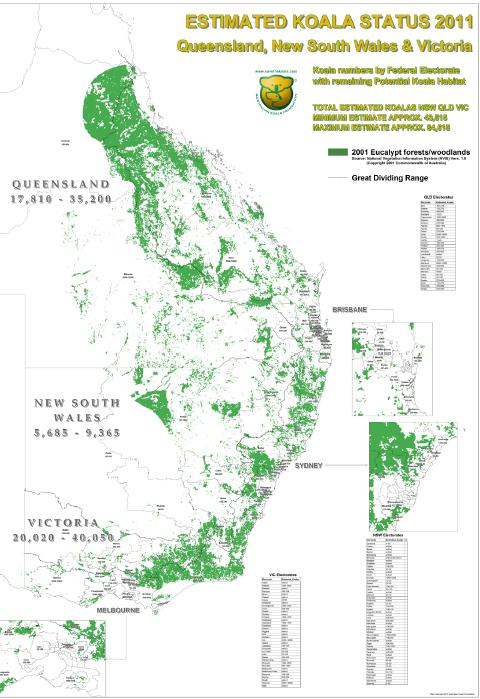 Estimated Australian Koala Population, 2011 Estimated Australian Koala Population, 2011
>Read Large Map(pdf) (3.4MB – – NB. if slow to open,
GoTo: File > Save As.., then open the PDF file from your auto-download folder)
[Source: ‘Bob’s Map’, Australian Koala Foundation,
^https://www.savethekoala.com/our-work/koala-numbers]
.
2011 Senate Committee: ‘The koala—saving our national icon’
.
The 19 Recommendations of the Senate Committee
.
<<Recommendation 1
The Australian Government fund research into the genetic diversity of the koala including a population viability assessment of the southern koala and determining priority areas for conservation nationally.
.
Recommendation 2
The Australian Government fund a properly designed, funded and implemented national koala monitoring and evaluation program across the full range of the koala.
.
Recommendation 3
The Australian Government establish a nationally coordinated and integrated program for population monitoring of threatened species and other culturally, evolutionary and/or economically significant species.
.
Recommendation 4
The Australian Government assist the koala research community and interested organisations to work towards a standardised set of methodologies for estimating koala populations.
.
Recommendation 5
The Threatened Species Scientific Committee provide clearer information to the Environment Minister in all future threatened species listing advices, including species population information, and that the Threatened Species Scientific Committee review its advice to the Minister on the listing of the koala in light of the findings of this inquiry.
.
Recommendation 6
The Australian Government undertake habitat mapping across the koala’s national range, including the identification of priority areas of koala conservation, with a view to listing important habitat under the provisions of the EPBC Act.
.
Recommendation 7
The habitat maps be used to identify and protect important habitat in known koala ranges.
.
Recommendation 8
The Australian Government review its land holdings which contain koala habitat and consider biodiversity, and specifically koala populations, in the management and sale of Commonwealth land.
.
Recommendation 9
The Australian Government actively consider options for recognition and funding for private land holders for the conservation of koala habitat.
.
Recommendation 10
The Australian Government fund research into koala disease, including the viability of vaccination programs and the effect of changes in leaf chemistry.
.
Recommendation 11
The Australian Government fund the Koala Research Network’s request for a Research Liaison Officer.
.
Recommendation 12
The Australia Government consider further wild dog control options in priority koala areas.
.
Recommendation 13
Local and state governments:
- Introduce appropriate speed limits in priority koala areas; and
- Where appropriate, build or retrofit underpasses or overpasses for major roads in priority koala areas as well as installing koala fencing adjacent to major roads.
.
Recommendation 14
Where the Australian Government provides funding for roads or other infrastructure in or adjacent to koala habitat, it be contingent on the provision of adequate koala protections.
.
Recommendation 15
The Australian Government work with the states to develop new national guidelines to ensure that all new roads and upgrades in or adjacent to koala habitat are koala-friendly.
.
Recommendation 16
The (Australian Government’s) Environment Minister consider the evidence provided to this inquiry when making his final decision on listing the koala as a threatened species.
.
Recommendation 17
The (Australian Government’s) Environment Minister consider options to improve the conservation status of the diverse and rapidly declining koala populations in New South Wales and Queensland to ensure a nationally resilient population is maintained. These options include listing the koala as vulnerable under the EPBC Act in areas where populations have declined significantly or are at risk of doing so.
.
Recommendation 18
An independent external review be conducted on the National Koala Conservation and Management Strategy to monitor the adequacy of progress. The review should assess and report on the progress made at the strategy’s midpoint.
.
The review must include an assessment of the:
- Strategy’s implementation to date and prospects into the future;
- Strategy’s effectiveness in stabilising koala numbers in areas of declining population, and in reducing the pressure of overabundant populations;
- Strategy’s level of ambition, including whether new elements are required; and
- Adequacy of the Commonwealth’s and the states’ respective roles and funding commitments.
.
Recommendation 19
The Australian Government adequately resource the National Koala Conservation and Management Strategy, and ensure that it is properly implemented through committing to a much stronger leadership role.>>
.
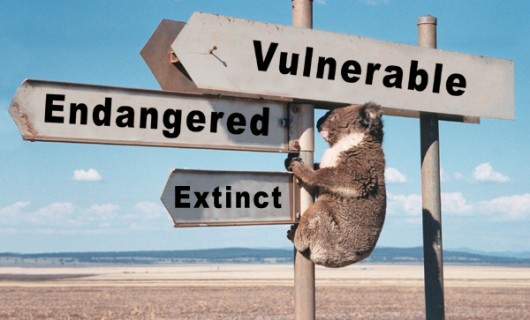 . .
.
Of note, ‘Recommendation 17‘ restricted the conservation status of the Koala only to ensure a ‘nationally resilient population is maintained’. That means that regional extinctions shall be acceptable, so long as a ‘nationally resilient population is maintained’ somewhere.
These are the places that the Koala is deemed to be declining and so given the vulnerable status. Other Koala populations elsewhere don’t weem to matter to the Australian Government.
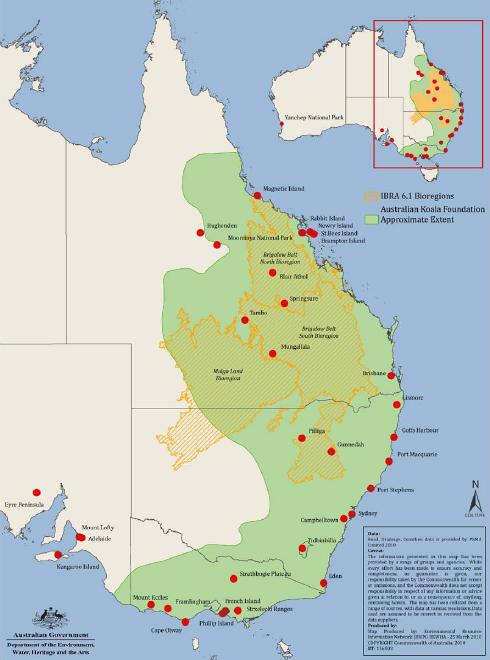 Koala tokenly listed as ‘Vulnerable’ but politically only at the above ‘selected places’
under the Environment Protection and Biodiversity Conservation Act (1999) Koala tokenly listed as ‘Vulnerable’ but politically only at the above ‘selected places’
under the Environment Protection and Biodiversity Conservation Act (1999)
.
.
2000: Even then, the United States recognised Koalas as ‘Vulnerable’
.
<<Back on 9th May 2000, the United States Government listed all koalas in Australia as vulnerable under the Endangered Species Act. The US Government determined that a) the eucalyptus and woodland ecosystems on which the arboreal marsupial depends has been greatly reduced, b) that despite conservation action by the governments of Australia, koala habitat continues to deteriorate, and c) that irrespective of koala numbers, the threats were present and real.
At the time, the Australian Government was outraged. The Australian Koala Foundation considered that the US may have been pointing out to Australia (when President Clinton and Vice President Al Gore were in power) that Australia needed to control its land clearing in readiness for the Kyoto Protocol on climate change. One petitioner pointed out that Australia at that time was clearing land second only to the Amazon.
At the time, the Victorian Government was pleading that they ‘had so many koalas they are pests’, and a similar cry was heard in the 2011 Senate Committee Enquiry into the plight of the Koala.
Australian Greens Leader, Senator Bob Brown had in 2010 successfully moved for a new Senate Comittee Enquiry to assess the threats to and management of koalas across the country. The Inquiry into the status, health and sustainability of Australia’s koala population, has particular reference to:
- the iconic status of the koala and the history of its management;
- estimates of koala populations and the adequacy of current counting methods;
- knowledge of koala habitat; d. threats to koala habitat such as logging, land clearing, poor management, attacks from feral and domestic animals, disease, roads and urban development;
- the listing of the koala under the Environment Protection and Biodiversity Conservation Act 1999;
- the adequacy of the National Koala Conservation and Management Strategy;
- appropriate future regulation for the protection of koala habitat;
- interaction of state and federal laws and regulations; and i. any other related matters.
.
Environment Minister Tony Burke appears to have been swayed by this plea as unlike his United States counterparts he did not consider the following in the American citation “…the actual number of koalas that were present at various times in the past and that may still exist is of much interest and helps to give some perspective but, as for many species, may not be the critical factor in determining whether the species is threatened. A low figure may reflect natural rarity of a population in marginal habitats. A high figure may be misleading if the entire habitat of the involved population faces imminent destruction”.
The document continues “…if we receive strong biological arguments, we would consider giving separate consideration to particular populations. It should be recognised, however, that koalas cannot be considered separate populations solely because they reside in different state jurisdictions”.
No such biological argument could be made. On the contrary, genetic studies in Victoria show that by and large all Victorian koalas, except those in the eastern part, are all pretty much genetically identical which means the future is bleak for conservation. Some of them even have testicles missing. On Kangaroo Island, some research suggests that as many as 29 per cent may have this affliction.
Imagine a koala that lives on the Murray River in New South Wales. On one side of the river, it has protection, but if it swims to Victoria, it does not. In AKF’s view, either the Australian Government values our national icon for its contribution to our nation or it does not.
As seen on Four Corners last night, the fur trade decimated the koala and the remnant populations are still low as a result of that slaughter.
Nowadays, the Koala pays its way in big tourism dollars, not the paltry one shilling (around 10 cents) per skin.
.
‘But the koala has powerful enemies. In the senate inquiry, developers, loggers, bureaucrats and even some departments of environment pleaded with the senators not to list the Koala because it would upset the developers or impede growth.’
.
The partial listing of the koala as vulnerable in NSW, ACT and Queensland can be seen as some sort of win, but will the existing legislation (the EPBC Act) be strong enough to protect the koala from long term destruction of its habitat?
Although the animal itself has been protected since 1936, its habitat really has not.
The Australian Koala Foundation believes its future lies in a koala-specific legislation similar to that of the American Bald Eagle Act, enacted in 1942. The Americans realised that if they did not do something strong and powerful they might lose their national icon forever. We believe that time has come now. The AKF estimates there may be as few a 43,000 koalas with no more than 85,000 left in its original habitat. If we are right, then there is no time to waste.
Greens Senator Bob Brown, as a final gesture before leaving Parliament, said he would support the AKF in our endeavours to enact a Koala Protection Bill. This should be a simple piece of legislation that basically says if you have koalas on your property that you cannot harm them, remove their trees and must – and that is the operative word – must ensure that your activity is benign for their long term future.
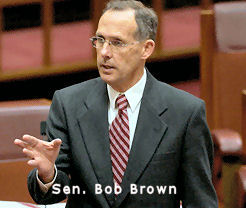
Four Corners has identified real threats to the koala and a partial listing will probably not make them go away. Neither will a specific piece of legislation, unless all our politicians actually realise we are at real risk of losing them.’>>
[Source: ‘Koalas deserve full protection‘, by Deborah Tabart, Chief Executive of the Australian Koala Foundation, 20120821, ABC, ^http://www.abc.net.au/environment/articles/2012/08/21/3571830.htm ; https://www.savethekoala.com/about-us/news-events/senate-inquiry]
.
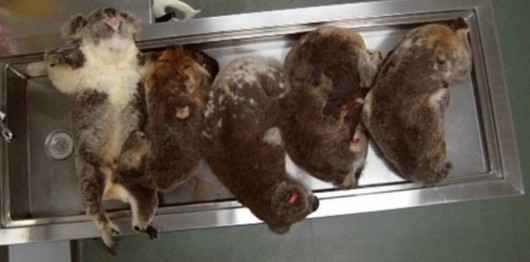 Dead Koalas on a vet’s autopsy table – with all the Green Talk how has it come to this?
Dead Koalas on a vet’s autopsy table – with all the Green Talk how has it come to this?
A native species that just sits up a tree, sleeps and hurts no-one
..now dying out because of Australian selfish viciousness.
Koalas are dying or being euthanised by the hundreds as a result of dog predation, road carnage, and Koala Habitat destruction.
[Source: ‘Koala Crunch Time’, ABC Four Corners (television programme), 20120821,
^http://www.abc.net.au/4corners/stories/2012/08/16/3569231.htm]
.
Watch ABC Four Corners Programme: ‘Koala Crunch Time‘
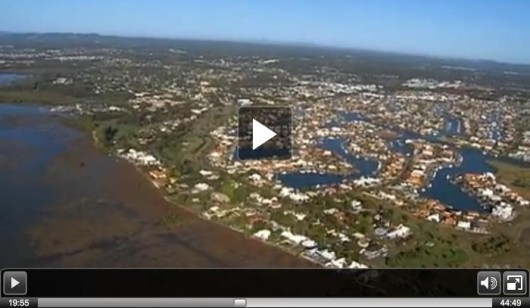 Australia’s Sprawl Profit overrules Biodiversity
‘Since 1997, koala hospitals along Australia’s eastern seaboard have recorded 15,000 Koala deaths’
[Source: Koala Crunch Time’, ABC Four Corners,^http://www.abc.net.au/4corners/stories/2012/08/16/3569231.htm] Australia’s Sprawl Profit overrules Biodiversity
‘Since 1997, koala hospitals along Australia’s eastern seaboard have recorded 15,000 Koala deaths’
[Source: Koala Crunch Time’, ABC Four Corners,^http://www.abc.net.au/4corners/stories/2012/08/16/3569231.htm]
.
 Westfield Shopping Centre development profiting out of Koala habitat apocalypse
Low (economic) Cost Housing, Coomera, Queensland Westfield Shopping Centre development profiting out of Koala habitat apocalypse
Low (economic) Cost Housing, Coomera, Queensland
.
.
IUCN wrongly continues to list Koalas as of ‘Least Concern’
.
Although Koala’s only exist naturally in Australia, at the international level the Koala (Phascolarctos cinereus) is still officially listed as of ‘Least Concern‘.
The most recent survey count of Koala status obtained by The International Union for Conservation of Nature (IUCN), the lead global authority on the environment and sustainable development, was back in 2008. Why, when the rapid decline data has been out since 2010?

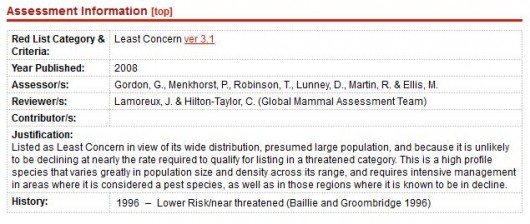 Phascolarctos cinereus (Koala)
The International Union for Conservation of Nature Red List of Threatened Species,
^http://www.iucnredlist.org/details/16892/0] Phascolarctos cinereus (Koala)
The International Union for Conservation of Nature Red List of Threatened Species,
^http://www.iucnredlist.org/details/16892/0]
.
The IUCN then assessed the Koala as having a ‘wide distribution’ and ‘a presumed large population’. It ignored regional declines and only regarded the national aggregate as appropriate data. Worse is that it stated thay the Koala “requires intensive management in areas where it is considered a pest species“.
Ed: What ecological incompetence, and wildlife hate would assess wildlife as a pest species?
.
The IUCN recognised that the Koala population was in decline in certain areas and identifed the following threats to the species:
- Continued habitat destruction, fragmentation, and modification (which makes them vulnerable to predation by dogs, vehicle strikes, and other factors)
- Bushfires
- Disease
- Drought associated mortality in habitat fragments
.
[Source: The IUCN Red List of Threatened Species – Phascolarctos cinereus (Koala), ^http://www.iucnredlist.org/details/16892/0]
.
Koala loss is symptomatic of Australia’s loss of much of the country’s native wildlife, its ecological communities and its biodiversity.
<<As of February 2011, a total of 1777 species are listed as threatened under the Environment Protection and Biodiversity Conservation Act (EPBC Act). A further 210 migratory and 464 marine species are also listed. The EPBC Act also lists 48 ecological communities as being threatened. These communities occur in a range of ecosystems including woodlands, forests, grasslands and wetlands.
Current threats to Australia’s biodiversity are:
- Habitat loss
- Degradation and fragmentation
- Invasive species and diseases
- Unsustainable use and management of natural resources
- Marine and coastal pollution (including from land based sources and vessels)
- Changes to the aquatic environment and water flows
- Changing fire regimes (Ed: bushfire management incompetence, and widespread Government-bush arson)
- Climate change.>>
.
[Source: ‘Status and Trends of Biodiversity’, Convention on Biological Diversity, ^http://www.cbd.int/countries/profile/?country=au#nbsap]
.
<<Friends of the Koala president Lorraine Vass said conservationists had been waiting for many years for koalas to be listed as vulnerable.
“At least a vulnerable to extinction listing,” she said. “It’s an additional layer of legislative protection and it’s better to have it than not to have it. “Apart from anything else it will be a very, very strong signal to everyone that at long last the nation is taking some responsibility for our national icon.”
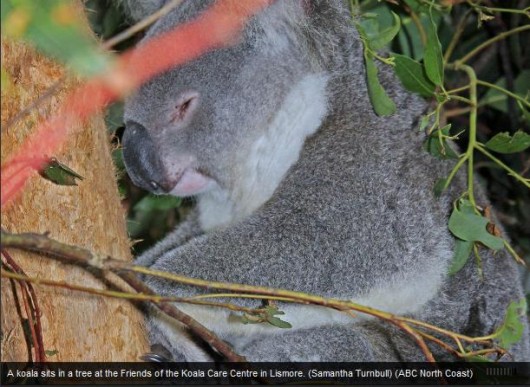
Ms Vass said statistics as well as anecdotal evidence showed koala numbers were rapidly declining, particularly in the Tweed (north eastern coastal New South Wales).
“I live at Wyrallah on a small property where koalas come and go, on the basis of observation at home I know that we’re seeing nowhere near as many koalas as we used to”, she said.
“In terms of statistics we’re actually bringing into care more koalas than we used to, but at the same time there are particular areas where we’re not bringing in as many koalas as we used to. So there are areas of local stress and the coastal area of Tweed is certainly one of those.”>>
[Source: ‘Greater protection for koalas‘, by journalist Samantha Turnbull, 20120430, ABC North Coast New South Wales, Australian Broadcasting Corporation, ^http://www.abc.net.au/local/photos/2012/04/30/3491805.htm, accessed 20121102]
.
<<This poor Koala was attacked by a Rottweiler in a suburban yard. It was reported that the koala was trying to get away and the dog grabbed it by the hindquarters as it was shimmying up a tree.
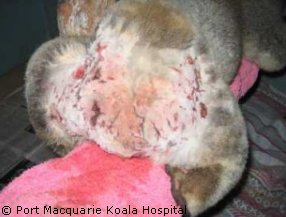 Koala injuries from a dog attack
Port Macquarie Koala Hospital
^http://www.koalahospital.org.au/ Koala injuries from a dog attack
Port Macquarie Koala Hospital
^http://www.koalahospital.org.au/
.
Sadly, this is a common occurrence with Koala’s. If it is not the hindquarters that are grabbed is around the neck or shoulder area. Usual injuries from this kind of incident are multiple puncture and tear wounds, with massive internal canine crush injuries. This koala had about 60 odd puncture wounds on his rump and groin area with many deep lacerations. His musculature around the groin and thigh area was lacerated pretty badly.
He died from shock, blood loss and ultimately a perforation of the intestine. The staff at the hospital gave him large amounts of fluids, and he was on strong painkillers and antibiotics. His wounds were flushed and he was kept in a warmed environment, but he died anyway.>>
[Source: Fourth Crossing Wildlife, ^http://www.fourthcrossingwildlife.com/dog_attack.htm]
.
.
Koala road deaths increasing
.
<<Not-for-profit conservation group, Friends of the Koala say 52 koalas were killed by vehicles on north coast roads last year.
The findings are part of the organisation’s annual report which documents the reasons behind the deaths of 222 north coast koalas. Association president Lorraine Vass says dog attacks and disease account for many koalas in their care. But she says hits from cars are the biggest concern.
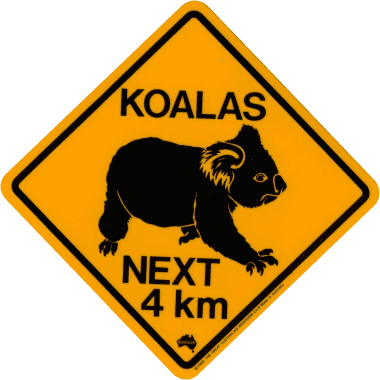
“One disturbing trend is an increase in road strikes,” she said. “Unfortunately that is a number that just keeps on increasing and last year we had 52 reports of koalas hit by cars. “Most of them, I’m afraid, were mortalities.”
But Ms Vass says there’s a positive outlook for koalas despite the figures. “I think there’s a lot to be optimistic about in terms of what’s going on with koala protection this year we’ve seen Lismore, we’ve got Tweed and Byron, those councils all working on a koala plan of management,” she said. “We’ve seen the federal announcement of the koala being listed under federal law as I say there’s a lot to be optimistic about.”>>
[Source: ‘Koala road deaths on rise‘, by Elloise Farrow-Smith, ABC, 20121019, ^http://www.abc.net.au/local/stories/2012/10/19/3614061.htm]
.
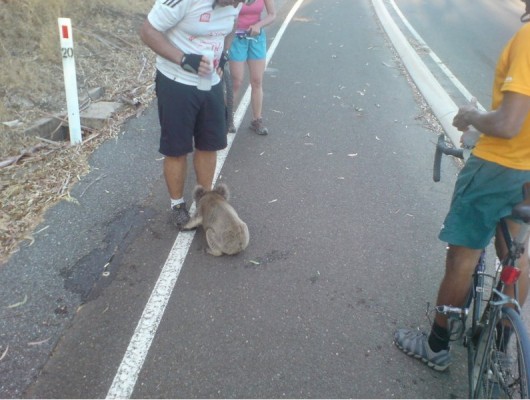 Koalas face a bleak future Koalas face a bleak future
.
Ed: The International Union for Conservation of Nature‘s global framework God-like governance for wildlife threatened by humanity is all about prioritising wildlife species most at risk of extinction for most protection.
.
It proclaims that if a species is not about to become extinct in the next ten years, its is not as important for conservation as those species that are.
.
But this is an Armageddon last man standing rationalisation. It may be administratively convenient, but it is an economic utilitarian philosophy that denies the rights of native wildlife to exist freely without persecution.
.
Were such an IUCN rationalist framwork applied to humans, such that don’t worry about say Chinese or Indians catching a deadly pandemic because there are a billion of them, it would be labelled as Herbert Spencer’s Social Darwinism or as Nazi Eugenics and quite rightly so. At The Habitat Advocate we espouse a worldview of Nature through: ^Deonteological Ethics and >Species Justice.
.
Every wildlife individual is valuable and has existence rights no different to humans.
.
Test: Would a human mother sacrifice her eldest or her youngest?
.
[Ed: All references sourced for this article 20111102]
.
.
Further Reading:
.
[1] ‘Koala Species Profile‘, Species Profile and Threats Database, Department of Environment etc, Australian Government, ^http://www.environment.gov.au/cgi-bin/sprat/public/publicspecies.pl?taxon_id=85104
.
[2] ‘Listing Advice to protect the Koala under the EPBC Act‘, Department of Environment etc, Australian Government,^http://www.environment.gov.au/biodiversity/threatened/species/pubs/197-listing-advice.pdf >Read Listing Advice (42 pages, PDF, 400kb – – NB. if slow to open, GoTo: File > Save As.., then open the PDF file from your auto-download folder)
.
[3] Koala Habitat Distribution Map (surveyed in 2011), Department of Environment etc, Australian Government, 2012 ^http://www.environment.gov.au/biodiversity/threatened/species/pubs/phascolarctos-cinereus-distribution-map.pdf
>Read Map (PDF, 300kb – NB. if slow to open, GoTo: File > Save As.., then open the PDF file from your auto-download folder)
.
[4] ‘Koala now threatened species‘, 20120215, Radio National Breakfast (radio programme), Australian Broadcasting Corporation,’There’s quiet optimism among koala experts that our national icon will finally be classified as a threatened or endangered species’.^http://www.abc.net.au/radionational/programs/breakfast/2012-02-15/3830832
>Play .mp3 audio:
 ℗ 2012 Australian Broadcasting Corporation ℗ 2012 Australian Broadcasting Corporation
.
[5] ‘Iconic animals – the koala‘, by Margot Foster, 20111228, ABC Rural (radio programme), Australian Broadcasting Corporation,
Abstract: ‘Michael Cathcart looks at the current efforts to protect this vulnerable animal. A senate committee has been looking into ‘the status, health and sustainability of Australia’s koala population’. He discovers the koala’s role as a cultural icon and the impact on our awareness of the koala, made by Norman Lindsay, as well as Dreamtime representations of the koala which reveal a great deal about the unique physiology and habits of this elusive animal.
The history of extensive slaughter of the koala since white settlement, because of the quality of its fur and value abroad, is an irony today because on Raymond Island, East Gippsland, koalas are making too many babies. There are about three hundred koalas on the small island and Department of Sustainability and Environment wildlife manager Charlie Franken says that’s about 250 too many.
Michael Cathcart speaks with Deborah Tabart OAM, CEO of the Australian Koala Foundation; Ann Moyal, author Of “Koala: A Historical Biography”; Michael J Connolly, Munda-gutta Kulliwari, Dreamtime Kullilla-Art; Helen Glad, Norman Lindsay’s grand daughter; Ann Moyal, author and historian; Charlie Franken, wildlife manager, Department of Sustainability and Environment; Dr Jay Patterson, Melbourne zoo vet and Dr Grant Kuseff, Bairnsdale veterinary surgeon;
^http://www.abc.net.au/rural/telegraph/content/2011/s3390776.htm
>Play .mp3 audio (large data file so may take a minute):
 ℗ 2011 Australian Broadcasting Corporation ℗ 2011 Australian Broadcasting Corporation
.
[6] ‘Interim koala referral advice for proponents‘, June 2012, Department of Environment (etc.), Australian Government,
Abstract: ‘Koala (Phascolarctos cinereus) populations in Queensland (QLD), New South Wales (NSW) and the Australian Capital Territory (ACT) have been listed as vulnerable under the Environment Protection and Biodiversity Conservation Act 1999 (EPBC Act). This listing came into legal effect on 2 May 2012. The listed threatened QLD, NSW and ACT populations are hereafter referred to in these guidelines as the koala.’
^http://www.environment.gov.au/epbc/publications/pubs/bio240-0612-interim-koala-referral-advice.pdf
.
[7] Australian Koala Foundation, ^ https://www.savethekoala.com/
 . .
[8] Koala Hospital, Port Macquarieuth Wales, ^ http://www.koalahospital.org.au/
 . .
[9] IUCN. (2001). IUCN Red List Categories and Criteria: Version 3.1. IUCN Species Survival Commission. IUCN, Gland, Switzerland and Cambridge, UK. ii + 30 pp, ^ http://www.iucnredlist.org/documents/redlist_cats_crit_en.pdf , >Read Document
.
Tags: Australian Koala Foundation, Black August, endangered koalas, Environment Protection and Biodiversity Conservation Act, Estimated Australian Koala Population, Friends of the Koala, Greater protection for koalas, iucn, Koala, Koala Crunch Time, koala extinction, koala habitat, Koala Protection Act, Koala Protection Bill, Koala road deaths, Koala road deaths on rise, National Koala Conservation and Management Strategy, New South Wales, Phascolarctos cinereus, Queensland, Save the Koala, Senate Committee Recommendations, South Australian koalas, The International Union for Conservation of Nature, The koala—saving our national icon, Threatened Species Scientific Committee, Victorian koalas, Westfield
Posted in Koalas, Threats from Development | 2 Comments »
Add this post to Del.icio.us - Digg
Saturday, May 21st, 2011
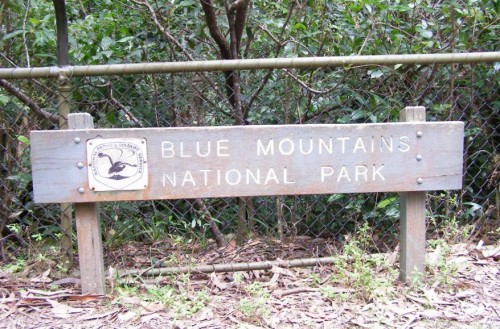
Wildlife Service sets fires to another 3000ha of World Heritage bushland
.
Last Wednesday (18th May 2011) right across the Blue Mountains, thick smoke choked the sky in a eye watering haze. By Friday, an artificial red sunset was blazing through the wood smoke at the end of two days of New South Wales government-sponsored bush arson.
I knew exactly the ecological disaster unfolding, out of sight out of mind.
In its annual misguided winter ritual, the National Parks and Wildlife Service (Wildlife Service), aided and abetted by the Rural Fire Service has deliberately setting fire to remote bushland across The Blue Mountains World Heritage Area – a ‘natural planet asset’ of which the Wildlife Service is international custodian.
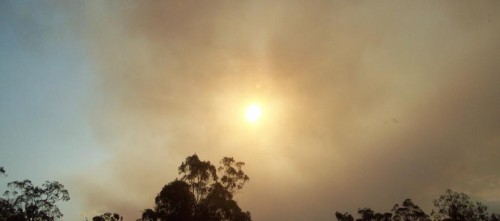
.
Linden Ridge HR Ops (May 2011)
.
On Wednesday afternoon 18th May 2011, the aerial incendiary bombing commenced at Linden Ridge and extended down to the Grose River inside the Blue Mountains National Park (within designated wilderness within the World Heritage Area). Bushfire management euphemistically call it ‘hazard reduction‘ (HR) ; rejecting any notion that bushland habitat is a natural asset, and instead demonising it as a ‘hazard’.
.
Massif Ridge HR Ops (May 2010)
.
The Linden Ridge ‘ops’ follows an almost identical HR ‘ops’ conducted the same time last year on 12 May 2010 in which aerial incendiary ‘ops’ commenced around Massif Ridge some 12 kilometres south of the town of Woodford in wild inaccessible forested area of the World Heritage Area. Some 2500 hectares of high conservation habitat bushland in a protected wilderness area called the ‘Blue Labyrinth’ was indiscriminately incinerated – ridgetops, gullies, everything. Refer to previous article on this website: >’National Parks burning biodiversity‘.
The same Blue Mountains National Park has been targeted by the same aerial incendiary bombing by the same Wildlife Service. Both the operations were carried out under the orders of the Blue Mountains regional manager, Geoff Luscombe.
 This is reducing the ‘hazard’
Click photo to enlarge, then click again to enlarge again and look for anything living.
After a year look for the animals.
After two years look for the animals…. This is reducing the ‘hazard’
Click photo to enlarge, then click again to enlarge again and look for anything living.
After a year look for the animals.
After two years look for the animals….
.
.
.
Gross Valley Defacto HR Ops (Nov 2006)
.
Both the above HR Ops follow the massive conflagration of November 2006, infamously recalled across the Blue Mountains community as ‘The Grose Fire‘. Two abandoned lightning strikes coupled with HR Ops along the Hartley Vale Road and escaping backburns coalesced and incinerated an estimated 14,070 hectares of the Grose Valley and adjoining ridge lands, much of which is designated wilderness. Many consider the actions of the bushfire management response in hindsight to have been a defacto hazard reduction burn. With such an effective elimination of the natural ‘hazard’ that year, as well as the public outrage, HR Ops went quite for four years.

How many animals native to this beautiful Grose Valley suffered an horrific burning death?
How many of their kind have now perished forever from the Grose?
…ask your Wildlife Service at Blackheath!
Charles Darwin in 1836 counted platypus in the area.
.
The perverted rationalisation by bushfire lighting theorists who have infiltrated the Wildlife Service is that the natural bushland, forests and swamps of the Blue Mountains World Heritage Area are perceived not as a valuable natural asset, but as a world ‘hazard’ area to be feared and ‘to be burned in case they burn‘.
These same bushfire lighting theorists have effectively infiltrated, appeased and silenced local conservation groups such as the otherwise very vocal Blue Mountains Conservation Society, the National Parks Association of New South Wales and the umbrella conservation group the New South Wales Conservation Council.
The local conservation movement’s complicity to sanction explicit broadscale ecological harm is a disgraceful and ignoble abandonment of cherished core values, and a breach of duty to faithful environmental membership.
.
.
.
Broadscale indiscriminate ‘HR’ is no different to wildfire or bush arson
The Linden Ridge and Massif Ridge HR Ops were approved and executed by government in the name of ‘hazard reduction’ – to reduce the available ‘fuel’ (native vegetation) for potential future wildfires or bush arson. In both cases, the massive broadscale natural areas burnt were not careful mosaic low intensity burning around houses. This was broadscale indiscriminate fire bombing of remote natural bushland many miles from human settlement. How can the deliberate setting alight of bushland where no fire exists, where no human settlement requires protection from the risk of wildfire be construed but anything other than ‘government-sanctioned bush-arson‘?
.
The ‘Ecological Burn’ Myth
.
When bushfire management can contrive no other excuse for setting fire to native vegetation, such as when that vegetation is many miles away from human settlement and so poses no direct threat, out comes the concocted theory of the ‘ecological burn’. The ‘ecological burn’ theory starts with the premise that because humans have observed that the Australian bush ‘grows back’ (eventually) after a bushfire, it may be concluded that the Australian bush can tolerate bushfires. This hypothesis relies on evidence that selected species of Australian germinate after smoke and fire and the example of epicormic growth of many Eucalypts after fire.
The first deductive fallacy of this theory is that all the Australian bush is bushfire tolerant. This deduction is then extended by unsupported assumption that since the Australian bush is bushfire-tolerant, bushfire must be an integral natural process to which the Australian bush has become adapted to bushfire. The assumption is then extrapolated to assert that bushfire is indeed beneficial to the Australian bush. The assumption is then stretched even further to conclude that without bushfire the Australian bush will be adversely affected. The ecological burn theory then prescribes that by burning the Australian bush, whether by natural or unnatural means, the biodiversity of the Australian bush will be improved.
The deductive fallacy goes further, to suit the motives of the fire-lighters. The outrageous generalisation is made that all the Australian bush must be burnt at some stage for its own ecological benefit. ‘So go forth and burn it. The bush will grow back. It will do it good.’
.
The perverted irrational logic that Australia’s native vegetation has adapted to recover from fire, is akin to claiming the human body is adapted to recover from injury such as burns. A wound may heal but no-one seeks to be injured in the first place. And not all wounds heal. A third degree burn to more than 50% of a human body is almost a certain death sentence. What percentage of a wild animal’s body can be burnt and the animal still survive? That’s a perverted question for the fire-lighters.
Broadscale hazard reduction is not mosaic patch-work fire. It is not creating a small scale asset protection zone around the immediate boundary of a human settlement. It is wholesale bush arson that is driving local extinctions. Ever wonder why when bushwalking through the Australian bush so few native animals are seen these days? Their natural populations have been decimated through two centuries of human harm – mainly poaching, introduced predation and habitat destruction including by human-caused bushfires and human-abandoned bushfires.

The recent concept of the so-called ‘ecological burn’ is a contrivance, a myth. It is a false cause fallacy. Ecological fire a defunct scientific theory contrived by bushfire management engaging unemployed graduates to think up an idea for a PhD. It belongs in the same discarded bucket of defunct scientific theories from days of yore of such ilk as ‘alchemy‘, ‘phlogiston‘, ‘flat earth‘, ‘hollow earth‘ and ‘the birth cries of atoms’ theories. Yup, these were once believed.
[Source: http://www.shortopedia.com/O/B/Obsolete_scientific_theories].
.
The effect on wildlife habitat by broadscale ‘hazard’ reduction is no different than if it was caused by wildfire or bush arson. The hazard to wildlife habitat is the same. The broadscale blanketing of bushland with high intensity burns that reach into the tree tops and scorching ground cover and earth, present the same intense fire regime. The landscape is laid to waste in just the same way as wildfire or bush arson does. Habitat and the wildlife it accommodates become the innocent victims of horrific bushfire, no matter how caused.
There is no wildlife monitoring before, during or after one of these aerial incendiary ‘ops’. Aerial incendiary guarantees no discretion between fire sensitive habitat and fire-resilient habitat. It is a simplistic, convenient a cheap one-size-fits-all solution that re-colours the fire maps to appease political masters. The chopper boys are given their bombing co-ordinates and then do their search and destroy mission. These airborne lads should apply their skills to good and not evil. They should stick to improving their water bombing skills, not participating in this perverted fire-lighting culture.
When the rains follow, the thin yet vital topsoils get washed away into the gullies and streams. This erodes the landscape and prevents regrowth of many flora species due to the lack of vital nutrients. After both the Massif Ridge HR and the Linden Ridge HR, heavy rains did follow.
Only the species of flora adapted to bushfire recover. Fire sensitive species of flora are eliminated from the landscape. Name one species of fauna that is fire tolerant. Where are the zoologists in the Wildlife Service to tell of the impact of the HR? If this mob is providing a ‘service’, it certainly ain’t providing a service to wildlife.
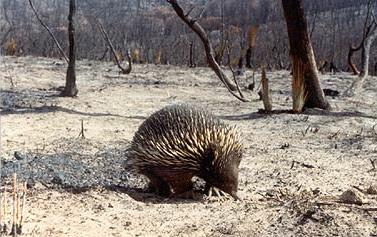
.
.
.
Wildlife Service chief boasts of mass incineration of 92,000 ha of National Parks
.
And the Wildlife Service regional chief for the Blue Mountains region, Geoff Luscombe, in his media release 17th May 2011 boasted of his:
“3000 hectare burn” that “the NPWS carried out more than 92,000 hectares of hazard reduction in 269 burns in 2009/10 – its biggest ever program.”
.
To put this area into perspective, in terms of the Blue Mountains World Heritage Area of about 1 million hectares, such a hazard reduction programme over a decade would decimate the Blue Mountains completely. And they call themselves a ‘Wildlife Service’?
Once again thousands of hectares of pristine flora and fauna habitat in deep inaccessible terrain, miles from houses and human property, has been incinerated from the air using contracted aircraft dropping indiscriminate aerial incendiaries. If only these boys had napalm!
Luscombe confirms in his media release…
“An aircraft will be used to manage the burn as most of the burn will take part in remote areas of the Blue Mountains.”
.
This incineration of natural wildlife habitat is justified by the Wildlife Service as ‘strategic‘ and ‘hazard reduction‘ operations are one of many being conducted by NPWS around the state making the most of the dry sunny winter conditions. This burn is part of the NPWS annual fire management program.
Luscombe again:
…“reducing the volume of fuels within strategic areas of the Park, can assist in limiting the intensity and rate of spread of a wildfire in the area.”
.
Then on Friday 20th May 2011, vertical plumes of smoke were seen rising from Cedar Valley south of the Jamison Valley ~ another one of these secret HR aerial incendiary black ops that the public is not supposed to know about? No notice on either the Blue Mountains Rural Fire Service site or the Wildlife Service site. Out of sight, out of mind.
.
.
.
‘Strategic Fire Management Zones’ – a symptom of a bushphobic cult out of control
.
Under the Blue Mountains Bushfire Management Committee which governs the Blue Mountains region, ‘environmental assets’ are restricted to “threatened species, populations and ecological communities and Ramsar wetlands, locally important species and ecological communities, such as species and ecological communities especially sensitive to fire.”
So how does aerial incendiary discriminate when setting fire to a contiguous 2500 hectares or 3000 hectares of wilderness?
Answer: It doesn’t , it doesn’t seek to, it doesn’t care. The guidelines are only to keep the greenies happy. It’s called ‘greenwashing’.
The Wildlife Service in its official Fire Management Strategy, has relegated 97.7% of the Blue Mountains National Park into either what it calls ‘Strategic Fire Advantage Zones’ or else ‘Heritage Zones. In essence, heritage Zones are valued natural areas that are protected from fire, whereas the Strategic Fire Advantage Zones are expendable. The Wildlife Service proclaims that …due to the ‘relative lack of practical fire control advantages’ (lack of access and resources), Strategic Fire Management Zones are ‘managed’ to protect community assets… to reduce fire intensity… assist in the strategic control… to contain bush fires and to strengthen existing fire control advantages.
All of which simply means is that it is expendable and can and should be burnt in case it burns. Strategic Fire Management Zones ‘are considered priority for ‘treatment‘ – read targeted for broadscale indiscriminate aerial incendiary. So 2500 hectares of wilderness around Massif Ridge copped it last winter and 3000 hectares of wilderness around Linden Ridge copped it this winter. If it’ red on the fire map, burn it!
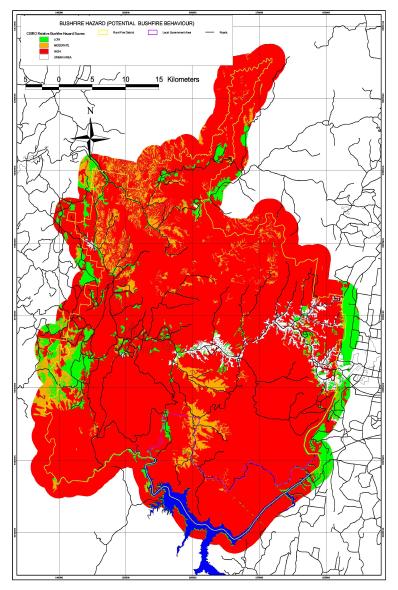
What do these ecological vandals get up to deep in the wilderness at night with their matches and petrol drip torches out of the direct view of the public? They put up signs to deny public access to their nefarious activities. Out of the public view, they are out of sight out of mind.
A cult is a group whose beliefs or practices are considered abnormal or bizarre. Starting large bushfires would seem to fit that definition. Fire-lighting is a cult of ecological deviance, just like any form of arson.
.
.
Precautionary principle ignored
.
“Where there are threats of serious or irreversible environmental damage, lack of full scientific certainty should not be used as a reason for postponing measures to prevent environmental degradation.” [Source: Principle 15 of the Rio Declaration (1992)] Such is the internationally agreed precautionary principle which Australia has adopted as a guiding principle of environmental management. The National Strategy for Ecologically Sustainable Development (1992) adopts the precautionary principle as a “core element” of ESD as does the Inter-Governmental Agreement on the Environment, and the Wildlife Service is supposed to be bound by it in its management of National Parks.
The Wildlife Service once a trusted upholder of the science-based ‘precautionary principle‘ has of late succumbed to the more red neck bushphobic fear of the bush. What the general public hears about the Wildlife Service these days is its broadscale fire bombing of vast areas of vegetation in its ‘protected’ National Parks. This is confirmed these days by the wood smoke-filled air choking many communities and responsible for unknown volumes of smoke emissions contributing to net human-caused pollution to the planet – what many call ‘climate change’.
In the Wildlife Service’s Plan of Management for the Blue Mountains National Park the only reference to the precautionary principle is “Maximum levels of total commercial recreational use in the park will be set for particular activities and particular locations according to precautionary principles.” (p.84) In its Fire Management Strategy for the Blue Mountains, the only reference to the precautionary principle is “the precautionary approach will generally be applied in the absence of specific information.” (p.53)
Clearly the Wildlife Services respect for the precautionary principle is tokenistic, and wholeheartedly disregarded with its use of aerial incendiaries. The Blue Mountains delicate ecosystems are vulnerable to the indiscriminate fire regimes being imposed upon them. The burning into the tree canopy, the broadscale contiguous burning, the scorching of the landscape until bare earth can be seen is highly damaging to the many micro ecosystem across the Blue Mountains. When such burning occurs what happens to the micro-organisms, fungi species and the natural soil biota?
.
” Much hazard reduction is performed to create a false sense of security rather than to reduce fire risks, and the effect on wildlife is virtually unknown.”
~ Michael Clarke (Associate Professor, Department of Zoology, La Trobe University, 2008)
.
.
.
.

A discredited Wildlife Service
.
The once trusted and respected Wildlife Service has lost its conservation way. It now spends more time, money and training on burning fragile ecosystems in its National Parks and exploiting those same parks for tourism exploitation, than it does on wildlife habitat rehabilitation. Sydney’s Taronga Zoo has become far more active and valuable in its urban wildlife recovery programmes than the Wildlife Service is in the wild.
At the carpark above Katoomba Falls within the Blue Mountains National Park, a rather old and deteriorating sign put up by the Wildlife Service years ago, conveys a conservation message to park users. The last two sentences are particularly poignant in light of the massive scale of broadscale bush arson repeatedly being inflicted by the protectorate of the National Park – the Wildlife Service. If only the Wildlife Service would “leave nothing but footprints” and follow its own maxim.
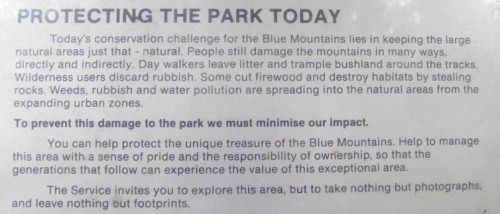
Indiscriminate bush arson of remote bushland in a National Park shows that the Wildlife Service has descended into a predatory wolf in sheep’s clothing. It’s management cannot be trusted with its custodial responsibility to protect the unique treasure of the Blue Mountains.
Once I had a desire to embark on a career as a National Parks Ranger. Had I, in the end, I would have morally wrestled with the hypocritical politics and lasted less than the initial probationary period. I empathise with those who hold a personal commitment to ecology and environmentalism within the Wildlife Service.
.
.
.
The key drivers of the ‘HR Culture’
.
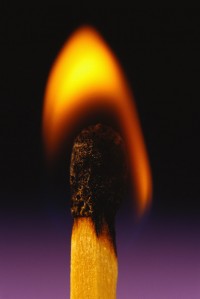
The perverted and unquestioned rush to set fire to as much bushland as possible across the Blue Mountains and indeed across Australia is being driven by five cultural factors:
- ‘Ecological Fire’ Myth. (as described above) Certain ”fire ecologists’ (a self-described term for many seeking to make this a lucrative profession) who are funded by bushfire management agencies, not surprisingly have conjured the academic theory that burning the bush is good for it because it increase biodiversity – just what bushfire management with their cheque book want to hear! They have conjured the term ‘ecological fire‘, which as a euphemism sounds good, so it must be good. So those setting fire to the bush may have no moral qualms. Crap. Show me any native fauna that proliferate after fire – ‘ecological’ or otherwise!
- Under-Resourced. Bushfire management is being repeatedly denied the necessary resources and technologies to quickly detect, respond to and suppress bushfore ignitions as and when they do occur, so there is a mindset of futile frustration that nothing can be done to stop bushfires frequently getting out of control.
- Bushphobic Extremists have become effective in their fear campaign to influence natural land managers, politicians and the media in their one dimensional theory that if bushland is not burnt to remove ‘fuel loads’ catastrophic firestorms will inevitably bring forth Armageddon. They preach that only the wholesale removal of forests will prevent wildfire. (Replacement with concrete would prevent it too.) Their constant evangelising reaches such irrational hysteria, that in order to appease them, HR Ops are promised and executed just to keep them at bay.
- False Sense of Security. ‘Much hazard reduction is performed to create a false sense of security’ (James Woodford, 8-9-2008). But how is burning remote bushland many kilometres from the human interface, allaying human security concerns? Yet hazard reduction is known to directly cause a sharp increase in fuel loads due to an unnaturally high and uniform germination of understory plants.
- Winter Idleness. Fire fighting naturally quietens off during the cooler wetter month of winter, and since Australian bushfire management agencies in the main only do bushfire management rather than throw on an SES jacket, multi-task in complimentary emergency management; many bushfire agencies are perceived (rightly or wrongly) as being idle over winter. So HR gives ’em all something to do!
.
.
.
The Wildlife Service must ‘love the smell of napalm (and smoke) in the morning’
.

The Wildlife Service undertaking these remote HR Ops, sending in the airborne firelighters, must be like watching the Huey helicopter beach attack scene in Francis Coppola’s 1979 film Apocalypse Now, based on Joseph Conrad’s novel ‘A Heart of Darkness’. Colonel Kilgore in his black Confederate cowboy hat shouts:
“We’ll come in low out of the rising sun, then about a mile out we’ll put on the music; scares the hell out of the slopes.”
Richard Wagner’s “Ride of the Valkyries” is played and the boys play war games with real aircraft and real fire and causing real death and destruction.

A giant napalm strike in the nearby jungle dramatically marks the climax of the battle. Kilgore exults to Willard, “I love the smell of napalm in the morning… The smell, you know that gasoline smell… Smells like … victory”, as he recalls a battle in which a hill was bombarded with napalm for over twelve hours.

The Wildlife Service aerial incendiary boys must think of themselves as Special Forces. Perhaps there is a Colonel Kurtz among them – like an insane killer operating deep inside Laos. Kurtz’ final lines in the film are “The horror! The horror!” How comparable with what is happening deep inside Australia’s wilderness areas, out of sight out of mind? …with extreme prejudice!

How comparable is the US secret war fire bombing of Vietnam, Cambodia and Laos during the Vietnam War with the out of sight fire bombing by the Wildlife service of vast areas of Australia’s natural landscape?
The legacy of the Wildlife Services’ aerial incendiary campaigns deep inside National Parks will be one remembered for fire bombing wildlife habitat from once natural and densely vegetated into a one unnatural, sterile and ghostly quiet.
When it is too late, hazard reduction will be acknowledged by our children as naiive threatening process of our generation that drove Australia’s remaining wildlife into extinction.
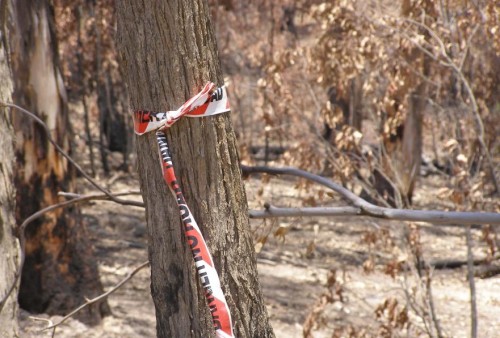
.
.
Further Reading:
[1] ‘ Catering for the needs of fauna in fire management: science or just wishful thinking?’ by Michael F. Clarke, Wildlife Research, Vol. 35 No. 5 Pages 385 – 394, Published 19 August 2008, ‘Ecological fire management in Australia is often built on an assumption that meeting the needs of plant species will automatically meet the needs of animal species. However, the scarcity of..’. ‘Wildlife Research: Ecology, Management and Conservation in Natural and Modified Habitats’, a CSIRO Journal, ISSN: 1035-3712, eISSN: 1448-5494, Available for subscription at http://www.publish.csiro.au/index.cfm
[2] ‘ The dangers of fighting fire with fire‘, by James Woodford, Sydney Morning Herald, 20080908, p.11, http://www.smh.com.au/news/opinion/the-dangers-of-fighting-fire-with-fire/2008/09/07/1220725850216.html (Accessed 20110523).
-end of article –
Tags: aerial incendiaries, applied ecology, blue labyrinth, Blue Mountains National Park, Blue Mountains wildlife, Blue Mountains World Heritage Area, bushfire myth, bushfire tolerant, bushphobic, conservation biology, ecological burn, fire-lighting cult, fuels, government bush-arson, greenwashing, Grose Valley Fires 2006, hazard reduction, heritage zone, koala extinction, leave nothing but footprints, Linden Ridge HR, Massif Ridge HR, NPWS, precautionary principle, prescribed burning, RFS, strategic fire advantage zone, strategic fire management zone, wildfire, Wildlife Service
Posted in Blue Mountains (AU), Threats from Bushfire | No Comments »
Add this post to Del.icio.us - Digg
Friday, January 28th, 2011
Australian native forests – are they valuable ecosystems and habitats for wildlife; or bushfire fuel hazards to be burned, before they burn?
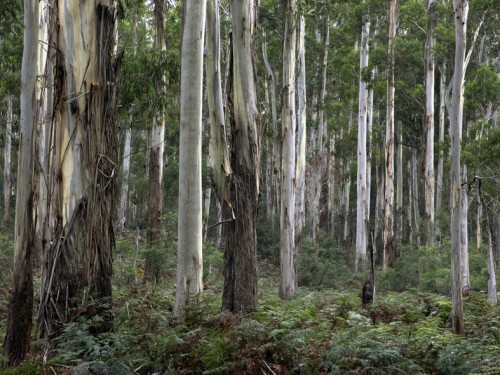 Blue Mountains wet schlerophyl forest
© Photo by Henry Gold, wilderness photographer
. Blue Mountains wet schlerophyl forest
© Photo by Henry Gold, wilderness photographer
.
.
Bushfire Management’s root problems
.
- Bushfire Management which recognises wildlife habitat as an asset worth protecting makes the fire fighting task immensely complex. So moreover the more simplistic and cost saving rationale of ‘protecting life and property’ holds sway, where no thought is given to the conservation values or to the habitat needs of wildlife. The inculcated and unquestioned bushfire management attitude that native forests are the cause of bushfires, rather than being victims of bushfires, belies one of the three key root problems of why bushfire management is failing. Ignitions left to burn in inaccessible terrain time again have proved be devastating not just for nature and wildlife, but consequentially for human life and property. Wildfire does not discriminate.
- Bushfire Management across Australia is so poorly equipped to detect and suppress ignitions when they do occur, that out of frustration, fear has been inculcated to encourage all native forests be dismissed as bushfire hazards and ‘prescribed burned’ as a precaution. Across the New South Wales Rural Fure Service, the term is quite unequivocal – ‘Hazard Reduction‘ . Broadscale hazard reduction, euphemistically labelled ‘strategic burns‘ or deceptively ‘ecological burns‘ and has become the greatest wildlife threatening process across Australia driving wildlife extinctions.’
- Both the localised and regional impacts of bushfire and hazard reduction upon wildlife ecology are not fully understood by the relevant sciences – ecology, biology and zoology. Fire ecology is still an emerging field. The Precautionary Principle is well acknowledged across these earth sciences, yet continues to be dismissed by bushfire management. They know not what they do, but I do not forgive them.
.
Australia’s record of wildlife extinctions are the worst of any country in the past two hundred years.
‘Of the forty mammal species known to have vanished in the world in the last 200 years, almost half have been Australian. Our continent has the worst record of mammal extinctions, with over 65 mammal species having vanished in the last 50 000 years.’ [Chris Johnson, James Cook University, 2006]
.
‘Australia leads the world in mammal extinctions. Over the last two hundred years 22 mammal species have become extinct, and over 100 are now on the threatened and endangered species list, compiled as part of the federal government’s Environment Protection and Biodiversity Conservation Act.’ [Professor Iain Gordon, research scientist in CSIRO’s new Biodiversity Theme, 2009.]
.
Uncontrolled bushfires, broadscale and frequent hazard reduction, and land clearing are the key drivers causing Australia’s remaining wildlife to disappear. Once habitat is destroyed, the landscape becomes favourable to feral predators which kill the remaining unprotected fauna. Thousands of hectares of Australia’s native forests are being burnt every year and are becoming sterile park lands devoid of undergrowth habitat. Wave after wave of habitat threats continue to undermine the layers of resilience of native fauna, until fauna simply have no defences left and populations become reduced to one local extinction after another.
James Woodford in his article ‘The dangers of fighting fire with fire‘ in the Sydney Morning Herald, 8th September 2008, incitefully observed:
‘Fighting fires with fear is a depressing annual event and easy sport on slow news days. Usually the debate fails to ask two crucial questions: does hazard reduction really do anything to save homes, and what’s the cost to native plants and animals caught in burn offs? What we do know is a lot of precious wild places are set on fire, in large part to keep happy those householders whose kitchen windows look out on gum trees.
Hazard reduction burning is flying scientifically blind. Much hazard reduction is performed to create a false sense of security rather than to reduce fire risks, and the effect on wildlife is virtually unknown. An annual bum conducted each year on Montague Island, near Narooma on the NSW far South Coast has become a ritual in which countless animals,including nesting penguins, are roasted.
The sooner we acknowledge this the sooner we can get on with the job of working out whether there is anything we can do to manage fires better. We need to know whether hazard reduction can be done without sending our wildlife down a path of firestick extinctions.’
.
.
‘Koalas may be extinct in seven years’
[Source: Sydney Morning Herald, 20070411]
.
‘Extreme drought, ferocious bushfires and urban development could make koalas extinct within seven years, environmentalists are warning. Alarms about the demise of the iconic and peculiar animal, which sleeps about 20 hours a day and eats only the leaves of the eucalyptus tree, have been raised before.
But Deborah Tabart, chief executive officer of the Australia Koala Foundation, believes the animal’s plight is as bad as she has seen it in her 20 years as a koala advocate.
“In South-East Queensland we had them listed as a vulnerable species which could go to extinction within 10 years. That could now be seven years,” she said. “The koala’s future is obviously bleak.”
South-East Queensland has the strongest koala populations in the vast country, meaning extinction in this area spells disaster for the future of the species, said Tabart.
The biggest threat is the loss of habitat due to road building and development on Australia’s east coast – traditional koala country. The joke, said Tabart, is that koalas enjoy good real estate and are often pushed out of their habitat by farming or development.
“I’ve driven pretty much the whole country and I just see environmental vandalism and destruction everywhere I go,” she said. “It’s a very sorry tale. There are [koala] management problems all over the country.”
Massive bushfires which raged in the country’s south for weeks during the summer, burning a million hectares of land, would also have killed thousands of koalas.’
[Read More]
.
.
‘A Bushfire action plan which protects people, property and nature’
[Source: The wilderness Society, 20090219, http://www.wilderness.org.au/campaigns/forests/bushfire-action-plan]
.
 In the immediate aftermath of the devastating Victorian Bushfires of 2009, The Wilderness Society, in response to bushfire management’s quick blaming of the native forests for the bushfires; drafted a ‘Bushfire Action Plan‘ that sought to recognise the need to protect nature along with people and their property. In the immediate aftermath of the devastating Victorian Bushfires of 2009, The Wilderness Society, in response to bushfire management’s quick blaming of the native forests for the bushfires; drafted a ‘Bushfire Action Plan‘ that sought to recognise the need to protect nature along with people and their property.
.
‘Bushfire remains one of the most complex and difficult aspects of our environment to deal with. Climate change is expected to make things even tougher, with increases in the number of high fire danger days and the number of people and houses at risk increasing with the tree/sea change phenomenon.
With the onset of climate change, mega-bushfires that burn massive areas are expected to occur more often.
A joint CSIRO and Bureau of Meteorology study of the impact of climate change in bushfires found parts of Victoria faced up to 65% more days of extreme fire risk by 2020, and 230% more by mid-century.
Yet clearly we have a lot to learn and the Royal Commission will set a new agenda for land and fire management, prevention and response. Many challenges will remain but some aspects seem clear. We need more money and support for fire fighters if we are to successfully protect life, property and the environment. Two key areas are the early detection of fires including the use of aerial surveillance and remote sensing especially in remote areas, increasing rapid response capacity including more “Elvis” helicopters to fight bushfires as soon as they start.
The outstanding work of firefighters on the front line needs to be backed up with the best available knowledge, planning and resources to ensure operations are as effective as possible in protecting people, property and nature. There is an urgent need to increase investment in these areas and rapidly establish scientific underpinning to fire management, as well as properly resourcing implementation and fire operations.
We also need more information for government and community about how to deliver fire management in a way that also protects the natural environment and our unique wildlife.
Fuel reduction burning has an important place in the fire management toolbox, and we support its place in scientifically underpinned fire management for the protection of life, property and the environment.
The issue of fuel reduction burning often dominates the fire debate, as if it is the only fire management tool. But it’s important to remember that this is only one tool in fire management, and not the silver bullet that will fire proof the landscape.
Environmental groups want to see the science that supports the current fuel reduction program, including a scientific justification for so-called hazard reduction burns in specific areas and the scientific justification for the route and extent of fire break establishment. Environmental groups are particularly concerned about the lack of impact assessment of these programs on biodiversity, particularly given their uncertain benefits to reduce the extent, frequency and severity of fire.
Views on these measures tend towards two extremes. One extreme is that we should fuel reduction burn all forest areas every 20 years and carve out thousands of kilometres of fire breaks, the other is that all our forests are wilderness areas which should just be allowed to burn and not manage our forests for fire at all.
For the Australian bush to be healthy and to protect people, property and nature we need a scientifically based balance between these extremes.
Fire management is not ‘one size fits all’ when it comes to the Australian bush. It needs to be targeted and specific, because we know that different kinds of bush respond differently to fire and therefore need different management. For native plants and animals to survive, fire management needs to promote “good” fire at the right time of year, of the right type and size. And that varies with vegetation type and resident native animals. Grasslands will require more frequent fires compared with forests, while areas such as rainforest will need to be protected from fire altogether.
That’s why we need good ecological science informing fire management, which has come a long way in understanding what’s best for native plants, but we need a better understanding of what fire management is best for protecting wildlife and avoiding extinctions. Its critical that scientists, fire agencies and governments work together to understand how to best manage fire to protect habitat for endangered wildlife, because no one wants fire management to lead to extinctions.
Of course, the protection of life & property needs to come first in fire management – but we can do that while also protecting nature and wildlife. A balanced approach is to prioritise the protection of life and property in areas close to farms and townships, and to prioritise fire management for the environment in remote areas and national parks.
A continuation of the expansion in knowledge, resources and support for fire management and community preparedness will best ensure the protection of life, property and the environment into the future…
.
We have developed a 6-point plan to reduce the bushfire risk and help protect people, property, wildlife and their habitat.
- Improve aerial surveillance to detect bushfires as soon as they start.
- Ramp up hi-tech, quick response capability, including more ‘Elvis’ helicopters to fight bushfires as soon as they ignite.
- More research into fire behaviour and the impact of fire on wildlife and their habitat.
- Around towns and urban areas – prioritise the protection of life and property with fuel reduction and fire break management plans.
- In remote areas and National Parks – prioritise the protection of wildlife and their habitat through scientifically-based fire management plans.
- Make native forests resistant to mega-fires by protecting old-growth forests, rainforests and water catchments from woodchipping and moving logging into existing plantations.
.
.
Critique of Roger Underwood’s Criticism of TWS ‘6-Point Plan‘
.
 On 12th February 2009, Roger Underwood, a former rural firefighter and a forestry industry employee in Western Australia, had his article published in The Australian newspaper criticising the above recommendations of The Wilderness Society (TWS). On 12th February 2009, Roger Underwood, a former rural firefighter and a forestry industry employee in Western Australia, had his article published in The Australian newspaper criticising the above recommendations of The Wilderness Society (TWS).
Regrettably, rather than offering constructive criticism and proposing counter arguments with supportive evidence, Underwood instead dismisses the Wilderness Society’s contribution, but disappointingly with empty rhetoric. Underwood states upfront:
“the trouble with the society’s action plan to reduce the risk of bushfires is that it won’t work.“
.
The Wilderness Society’s six-point action plan aims to counter the current bushfire management strategy that relies upon hazard reduction burning and the ecological damage this is causing – ‘destroying nature’, ‘pushing wildlife closer to extinction’, ‘increasing the fire risk to people and properties by making areas more fire prone’.
Underwood claims that statistics exist showing no massive increase in prescribed burning, but in fact that prescribed burning has declined. Yet Underwood fails to provide nor even reference any such statistics. He fails to recognise that both bushfires and prescribed burning collectively cause adverse impacts on wildlife. If all burning of native vegetation, however caused, is included in the assessment, then would statistics indeed show an increasing trend in the natural area affected by fire in Australia?
.
‘Burn it before it burns’ Theory
.
Underwood questions the wildlife extinction problem without any basis. He then adopts the ”old chestnut‘ theory of blaming the threat to wildlife on ‘killer bushfires‘. ‘Killer bushfires’ (the firestorm threat) has become the default justification by bushfire management for its policy of prescribed burning. This is the ‘Burn it before it burns!‘ defeatist attitude. If one burns the bush, there will be no bush to burn. Underwood’s claim that ‘killer bushfires’ are a “consequence of insufficient prescribed burning” is a self-serving slippery slope fallacy. If nature is an asset of value to be protected, then it is defeatist to damage it to prevent it from damage. The history of so-called ‘controlled burns‘ have an infamous reputation of getting out of control and becoming wildfires. If the attitude of burning as much of the bush as possible to avoid uncontrolled wildfire, then then paradoxically the implied incentive is to let controlled burns burn as much as possible to minimise the risk of unexpected fires in the same area.
.
In respect to each of The Wilderness Society’s (TWS) Six Point Plan, one counters Underwood’s responses as follows:
.
1: Improve aerial surveillance to detect bushfires as soon as they start
.
Underwood supports aerial detection as “a first-rate resource and a comprehensive system” but says that it can fail completely under hot, unstable atmospheric conditions and when there are very high winds. However, fire towers and aircraft are not the means of bushfire surveillance today. Low orbiting geostationary satellites with infrared and high resolution cameras can now spot individual cars in real time and through cloud and smoke. Satellites are not affected by atmospheric conditions such as high winds or hot temperatures. Modis-Fire is one company that specialises in such satellite technologies.
In addition, the CSIRO, with the Department of Defence and Geoscience Australia, has developed an internet-based satellite mapping system called ‘Sentinel Hotspots‘. Sentinel Hotspots gives emergency service managers access to the latest fire location information using satellite data. Fire fighting organisations across Australia have used this new strategic management tool, since it was launched in 2002, to identify and zoom in on fire hotspots. [Read More]
In 2003, an article in the International Journal of Wildland Fire entitled ‘Feasibility of forest-fire smoke detection using lidar‘ extolled the virtues of forest fire detection by smoke sensing with single-wavelength lidar.
Such technologies are available if the political will was met with appropriate investment. Such technologies could be available to a military-controlled national body, but unlikely to be available to volunteer members of the public. It all depends on the standard of performance Australians expect from bushfire management.
.
2: Ramp up hi-tech, quick response capability, including more ‘Elvis’ helicopters to fight bushfires as soon as they ignite.
.
Underwood dismisses aerial fire-bombing as a “dream” that “has never succeeded in Australia, and not even in the US” and “next to useless“.
Well, it seems Underwood is contradicted by the recent decisions of Australia State Governments across Australia’s eastern seaboard to charter not just one Erikson Aircrane but three. Not only was Elvis contracted from the United States in Summer 2010 to Victoria, “Elvis” was based in Essendon, ‘Marty‘ was based in Gippsland and ‘Elsie‘ was based in Ballarat. Clearly, the Victorian State Government considers the cost of these three aircraft justifiably cost-effective in offering quick response capability to fight bushfires.
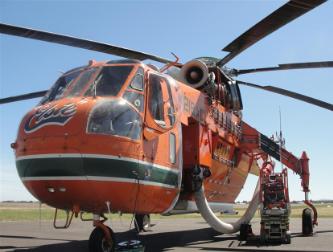 Dedicated Fire Fighting Erikson Aircrane ‘Elsie‘ based in Ballarat, Victoria during the 2010 Summer
© Photo ABC Ballarat http://www.abc.net.au/local/audio/2010/12/22/3099609.htm
.
In South Australia, the Country Fire Service (CFS) believes in the philosophy of hitting a fire ‘hard and fast’.
.
‘CFS volunteers and aerial firefighting aircraft are responded within minutes of a bushfire being reported and as many resources as possible are deployed to keep the fire small and reduce the chance of it getting out of control. It is not widely known that South Australia has a world class initial attack strategy of aerial firefighting. The value of a rapid aerial firefighting approach has been supported by Bushfire Cooperative Research Centre research. In their 2009 report titled ‘The cost-effectiveness of aerial fire fighting in Australia, the Research Centre wrote the following in their summary
.
The results of the analysis show that the use of ground resources with initial aerial support is the most economically efficient approach to fire suppression. Aircraft are economically efficient where they are able to reach and knock down a fire well before the ground crew arrives. This buys time for the ground forces to arrive and complete the containment. Rapid deployment of aerial suppression resources is important. This advantage is much greater in remote or otherwise inaccessible terrain. Where other suppression resources are unable to reach the fire event within a reasonable time period, sole use of aircraft is economically justified.’
[http://www.bushfirecrc.com.au/research/downloads/The-Cost-Effectiveness-of-Aerial-Fire-Fighting-in-Australia.pdf].
. Dedicated Fire Fighting Erikson Aircrane ‘Elsie‘ based in Ballarat, Victoria during the 2010 Summer
© Photo ABC Ballarat http://www.abc.net.au/local/audio/2010/12/22/3099609.htm
.
In South Australia, the Country Fire Service (CFS) believes in the philosophy of hitting a fire ‘hard and fast’.
.
‘CFS volunteers and aerial firefighting aircraft are responded within minutes of a bushfire being reported and as many resources as possible are deployed to keep the fire small and reduce the chance of it getting out of control. It is not widely known that South Australia has a world class initial attack strategy of aerial firefighting. The value of a rapid aerial firefighting approach has been supported by Bushfire Cooperative Research Centre research. In their 2009 report titled ‘The cost-effectiveness of aerial fire fighting in Australia, the Research Centre wrote the following in their summary
.
The results of the analysis show that the use of ground resources with initial aerial support is the most economically efficient approach to fire suppression. Aircraft are economically efficient where they are able to reach and knock down a fire well before the ground crew arrives. This buys time for the ground forces to arrive and complete the containment. Rapid deployment of aerial suppression resources is important. This advantage is much greater in remote or otherwise inaccessible terrain. Where other suppression resources are unable to reach the fire event within a reasonable time period, sole use of aircraft is economically justified.’
[http://www.bushfirecrc.com.au/research/downloads/The-Cost-Effectiveness-of-Aerial-Fire-Fighting-in-Australia.pdf].
.
Underwood claims that: “Elvis-type aircranes cost a fortune, burn massive amounts of fossil fuel, use gigalitres of precious water and are ineffective in stopping the run of a crown fire that is throwing spot fires. Water bombers do good work protecting houses from small grass fires. But against a big, hot forest fire and during night-time they are next to useless.”
Underwood conveys a sense of dogged reliance in traditional fire truck centric thinking as if to preserve an old firie culture of ‘we know best‘ and ‘nothing is going to change our thinking‘ mindset. May be it is out of petty envy wherein many volunteer firies can command trucks but wouldn’t have a clue flying helicopters and so would feel sidelined.
Well, since the 2009 Victorian Bushfires, more than A$50 million worth of new initiatives have been introduced or are under development.
“Further changes are likely to be introduced as the Royal Commission, which was established to investigate the Black Saturday disaster, is ongoing. Aerial firefighting is set to be addressed by the commission. Among new initiatives in Victoria is a A$10 million trial of a very large air tanker (VLAT) – the first-ever such experiment in the country. On 14 December, a McDonnell Douglas DC-10-30 Super Tanker, leased from US company 10 Tanker Air Carrier, arrived in Melbourne. Australian regulator, the Civil Aviation Safety Authority, and underwent final compliance assessment to allow it to enter service in January.”
.
[Source : http://www.flightglobal.com/articles/2010/02/09/338056/australia-puts-firefighting-tankers-to-the-test.html]
Underwood may well dismiss aerial suppression technology as ‘razzle-dazzle‘, but he is right to state that such investment requires governments to put more resources into research and into monitoring bushfire outcomes, including the environmental impacts of large, high-intensity bushfires and continuous feedback to management systems from real-world experience out in the forest.’
.
3: More research into fire behaviour and the impact of fire on wildlife and their habitat
.
While Underwood claims that he supports more research into fire behaviour and fire impacts, he is dismissive of the conclusions of much of the research already done, but offers no explanation. This seems an internal contradiction. What are the conclusions of the research?
Underwood claims the conclusions do not support the Wilderness Society’s agenda. How so? What is TWS agenda?
Underwood conveys an unsubstantiated bias against the Wilderness Society, only offering an ad hominem fallacious argument – attacking the messenger, not the argument.
.
The science on fire ecology is still emerging. The Wilderness Society validly states above that ‘bushfire remains one of the most complex and difficult aspects of our environment to deal with‘, that ‘there is an urgent need to increase investment in these areas and rapidly establish scientific underpinning to fire management, as well as properly resourcing implementation and fire operations‘ and ‘the lack of impact assessment of these programs on biodiversity, particularly given their uncertain benefits to reduce the extent, frequency and severity of fire‘.
.
4: Around towns and urban areas – prioritise the protection of life and property with fuel reduction and fire break management plans.
.
Underwood here perceives an inconsistency in TWS Action Plan – suggesting its support for fuel reduction around urban areas contradicts its claim that fuel reduction makes the burned areas “more fire prone”. However, this action item is about prioritising fuel reduction on a localised basis around the immediate areas where life and property are located.
Whereas broadscale hazard reduction that is carried out many miles from human settlements has become a new strategy of bushfire management. The excuse used is euphemistically termed a ‘strategic burn‘ or even an ‘ecological burn‘ in the name of encouraging biodiversity. Except that the practice seems to be a leftover habit from the Vietnam War in which helicopters are used to drop incendiaries indiscriminately into remote areas without any care for the consequences.
 A so-called ‘ecological burn‘ of Mt Cloudmaker
This was conducted by helicopter incendiary by NSW National Parks and Wildlife Service (DECCW)
in the remote Krungle Bungle Range of the Blue Mountains World Heritage Area
(Photo by editor from Hargraves Lookout, Shipley Plateau, 20080405 , free in public domain) A so-called ‘ecological burn‘ of Mt Cloudmaker
This was conducted by helicopter incendiary by NSW National Parks and Wildlife Service (DECCW)
in the remote Krungle Bungle Range of the Blue Mountains World Heritage Area
(Photo by editor from Hargraves Lookout, Shipley Plateau, 20080405 , free in public domain)
.
A recent example is the ‘strategic burn’ authorised and executed by the NSW Department of Environment, Climate Change and Water (DECCW) in the Blue Mountains World Heritage Area on 12th May 2010. Some 2500 hectares of remote wilderness was deliberately set alight around Massif Ridge, some 12 kilometres south of the town of Woodford in wild inaccessible forested area of the World Heritage Area. The excuse was to reduce the available ‘fuel’ (native vegetation) for potential future wildfires. [>Read More: ‘National Parks burning biodiversity‘ ]
.
5: In remote areas and National Parks – prioritise the protection of wildlife and their habitat through scientifically-based fire management plans.
.
Underwood contends another stock standard industry claim that where native forests have been protected, they have naturally accumulated fuel loads in which sooner or later an uncontrollable landscape-level fire occurs. So his anthropocentric theory runs that is humanity’s responsibility not to let nature be nature, but to control nature and so to burn the bush before it burns. This theory is premised on the defeatist approach that in the event of a bushfire, bushfire management is not in a position to detect and suppress it.
And so Underwood, poses the standard industry response of “more frequent planned burning under mild conditions“. He assumes that leaving the overstorey and the soil intact will ensures a diversity of habitat for wildlife. Yet Underwood is not a zoologist and has no understanding of the vital role that dense ground vegetation provides to Australia’s native ground dwelling mammals (e.g.the Long-footed Potoroo, Spotted-tailed quoll, Eastern Pygmy Possum, the Petrogale penicillata, Broad-toothed Rat, Bolam’s Mouse, the Smoky Mouse, the Eastern Chestnut Mouse, the Long-nosed Bandicoot), as well as nexting birds, flightless birds, amphibians and reptiles.
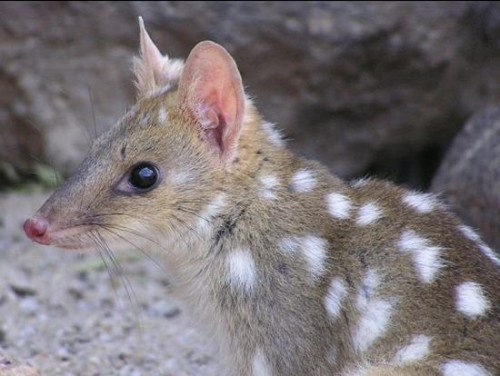 Eastern Quoll – Dasyurus viverrinus – EXTINCT on mainland Australia
© Photo by Andrea Little http://www.mtrothwell.com.au/gallery.html Eastern Quoll – Dasyurus viverrinus – EXTINCT on mainland Australia
© Photo by Andrea Little http://www.mtrothwell.com.au/gallery.html
.
Underwood’s view reflects the simplistic misguided view of biodiversity of most of Australia’s bushfire management – that the presence of trees and regrowth of fire-tolerant plants equates to biodiversity.
Can Underwood name one species of Australian fauna that is fire tolerant?
Underwood misinterprets the text of TWS which advocates an holistic fire management system, not as a silver bullet or ‘one-size-fits- all’ convenient panacea that pretends to fire proof the landscape. The only guarantee of ‘one-size-fits- all’ hazard recution is a sterile forest devoid of biodiversity and causing local species extinctions. TWS argues for a scientifically-based and balance approach recognising that some forest ecosystems like rainforests are most definitively fire-intolerant.
.
6: Make native forests resistant to mega-fires by protecting old-growth forests, rainforests and water catchments from woodchipping and moving logging into existing plantations
Underwood challenges this last item stating there is no evidence that old growth forest is less likely to burn than the regrowth forests. This is false. Australian native forests that regrow after fire are those that are fire-resistant. Typically, these genus (Eucalypt and Acacia) regrow quickly and become dense mono-cultures. If a fire passes through again, the fire is often more intense and devastating. Old growth forests, rainforests and riparian vegetation around water catchments tend to be moist and so less prone to bushfires.
But this sixth item is not about the relative propensity of old growth forests to burn more readily than regrowth forests, so Underwood’s argument is a distracting red herring. TWS’ aim here is more about placing a higher value on old growth and rainforests due to their greater biodiversity and due to their increasing scarcity. Clearly, TWS is ideologically opposed to woodchipping and logging of old growth forests and rainforests. Logging operations typically involve follow up deliberate burning and such fires have frequently got out of control. Underwood’s needling criticism of TWS for having a lack of knowledge of fire physics or bushfire experience is a typical defensive criticism leveled at anyone who dares to challenge bushfire management. Conversely, if Underwood has the prerequisite knowledge of fire physics or bushfire experience, he is not very forthcoming except to defend the status quo of bushfire management.
The recent bushfire results are demonstrating that bushfire management is increasingly unable to cope with bushfire catastrophes nor meet the expectations of the public to protect life, property and nature.
.
.
Further Reading:
.
[1] ‘Studies of the ground-dwelling mammals of eucalypt forests in south-eastern New South Wales: the species, their abundance and distribution‘ by PC Catling and RJ Burt, CSIRO, 1994, http://www.publish.csiro.au/paper/WR9940219.htm
.
[2] ‘Australia’s Mammal Extinctions – A 50,000-Year History‘, by Chris Johnson, 2006, James Cook University, North Queensland. http://www.cambridge.org/aus/catalogue/catalogue.asp?isbn=9780521686600
.
[3] ‘Solving Australia’s mammal extinction crisis‘, (2009) by Professor Iain Gordon, research scientist in CSIRO’s new Biodiversity Theme, ABC Science programme. He chaired a symposium on Australia’s mammal extinction crisis at the 10th International Congress of Ecology in Brisbane August 2009. http://www.abc.net.au/science/articles/2009/09/02/2674674.htm
.
[4] ‘Koalas may be extinct in seven years‘ , Sydney Morning Herald, 20070411, http://www.smh.com.au/news/environment/koalas-may-be-extinct-in-seven-years/2007/04/11/1175971155875.html
.
[5] ‘A Bushfire action plan which protects people, property and nature‘, The Wilderness Society, 20090219, http://www.wilderness.org.au/campaigns/forests/bushfire-action-plan
.
[6] ‘Manage bush better so climate won’t matter‘, by Roger Underwood (ex-firefighter), The Australian newspaper, 20090212, http://www.theaustralian.com.au/news/manage-bush-better-so-climate-wont-matter/story-e6frg73o-1111118824093
.
[7] ‘Locating bushfires as they happen‘, CSIRO – Sentinel Hotspots, http://www.csiro.au/solutions/Sentinel.html
.
[8] ‘Modis-Fire’ satellite bushfire detection, http://modis-fire.umd.edu/Active_Fire_Products.html
.
[9] ‘Elsie’s first day on the job, Ballarat’s fire fighting helicopter‘, by Prue Bentley (ABC TV Ballarat), 20101222, http://www.abc.net.au/local/audio/2010/12/22/3099609.htm
.
[10] ‘South Australia – Country Fire Service – Factors that influence aircraft selection‘ – http://www.cfs.sa.gov.au/site/about_us/aerial_firefighting/aircraft_selection.jsp
.
[11] ‘Australia puts firefighting tankers to the test‘, Fight Global 20090209, http://www.flightglobal.com/articles/2010/02/09/338056/australia-puts-firefighting-tankers-to-the-test.html
.
[12] ‘Bushfire-CRC – Aviation content’, http://www.bushfirecrc.com/category/bushfiretopic/aviation.
.
[13] ‘Towards New Information Tools for Understanding Bushfire Risk at the Urban Interface‘, 2004, R. Blanchi, J. Leonard, D. Maughan, Bushfire-CRC, CSIRO Manufacturing & Infrastructure Technology, Bushfire Research. [Read full report]
[end of article]
.
Tags: Australian native forests, Blue Mountains wildlife, broadscale burning, bushfire action plan, Bushfire-CRC, Chris Johnson, CSIRO, dangers of fighting fire with fire, eastern quoll, ecological burn, Erikson Aircrane, fire-intolerant, fuel reduction, fuel reduction program, ground dwelling mammals, hazard reduction, Henry Gold, koala extinction, mammal extinctions, Modis Fire, Montague Island hazard reduction, precautionary principle, precribed burning, Professor Iain Gordon, Roger Underwood, Rural Fire Service, Sentinel Hotspots, sterlisation of forests, strategic asset management, The Wilderness Society, threatening process, Victorian Bushfires 2009, wildfire, wildlife extinctions, wildlife habitat
Posted in Blue Mountains (AU), Threats from Bushfire | No Comments »
Add this post to Del.icio.us - Digg
|
|
 Shrinking Koala Habitat – completely dependent upon the whims of Australians, if we give a toss.
Shrinking Koala Habitat – completely dependent upon the whims of Australians, if we give a toss. Former NSW Labor Minister for Minerals and Forest Resources, Steve Whan,
who also had Primary Industries, Emergency Services and Rural Affairs – i.e. politically imposed conflicts of interests.
Former NSW Labor Minister for Minerals and Forest Resources, Steve Whan,
who also had Primary Industries, Emergency Services and Rural Affairs – i.e. politically imposed conflicts of interests. Susie Zent in the area slated for road-widening 2005
Susie Zent in the area slated for road-widening 2005 Strzelecki Koala Endangered
(South Gippsland Victorian, Australia)
Strzelecki Koala Endangered
(South Gippsland Victorian, Australia)
 Road hit female koala with broken jaw. Had to be euthanised after 6 weeks.
Urgent research is required to determine breeding populations, location and numbers. Logging seriously impacts on long term populations of this animal.
[Source: Hancock Watch, ^http://hancockwatch.nfshost.com/docs/koala.htm#content_top]
Road hit female koala with broken jaw. Had to be euthanised after 6 weeks.
Urgent research is required to determine breeding populations, location and numbers. Logging seriously impacts on long term populations of this animal.
[Source: Hancock Watch, ^http://hancockwatch.nfshost.com/docs/koala.htm#content_top]
 Embattled: Ms Parker – thinks she’s only accountable to herself and Premier O’Farrell.
Picture: Kristi Miller Source: The Daily Telegraph
Embattled: Ms Parker – thinks she’s only accountable to herself and Premier O’Farrell.
Picture: Kristi Miller Source: The Daily Telegraph
 [Source: National Geographic, ^http://natgeotv.com.au/tv/koala-hospital/gallery.aspx]
[Source: National Geographic, ^http://natgeotv.com.au/tv/koala-hospital/gallery.aspx]




 1927 ‘Black August’
When 600,000 Koalas were shot and skinned across Queensland
1927 ‘Black August’
When 600,000 Koalas were shot and skinned across Queensland




















































